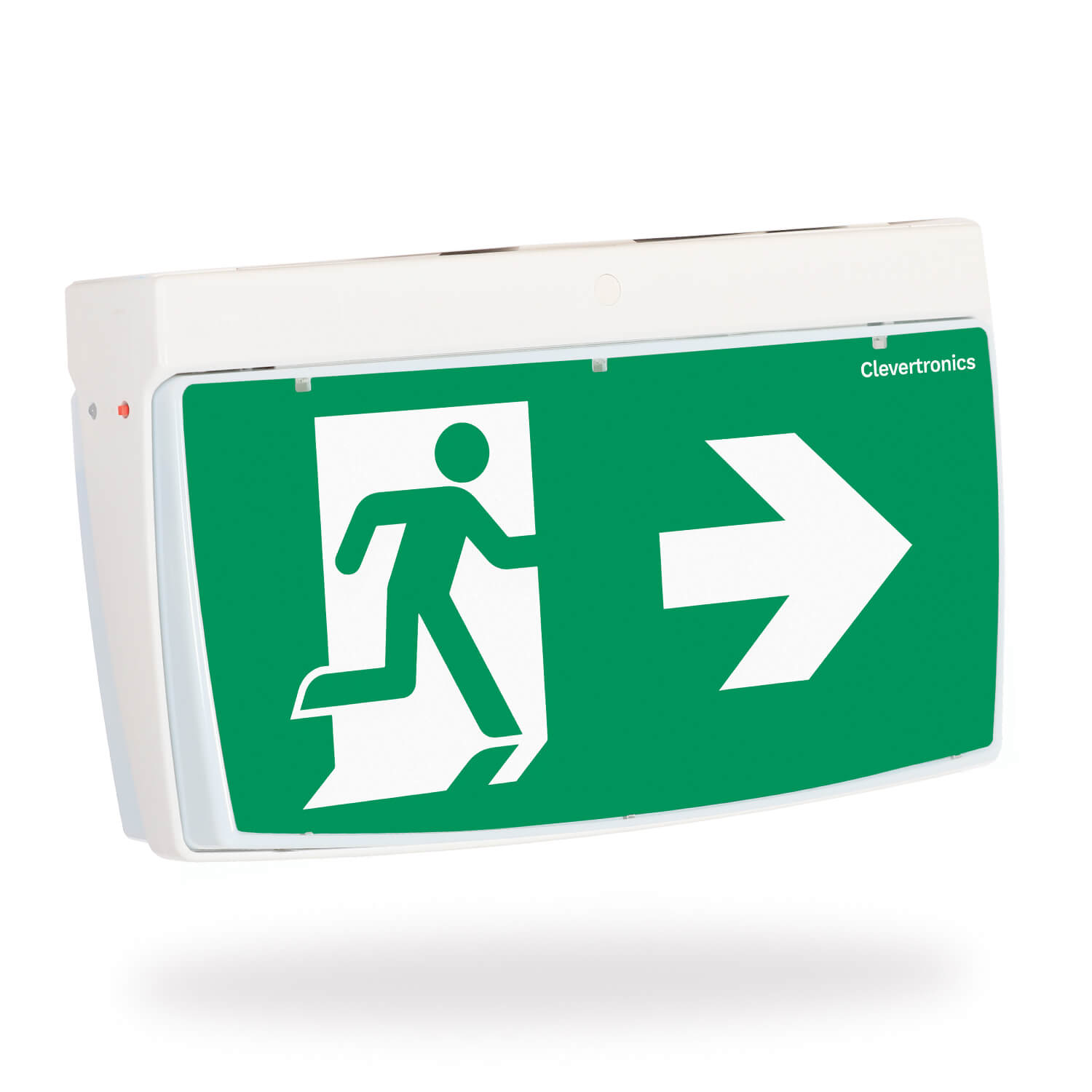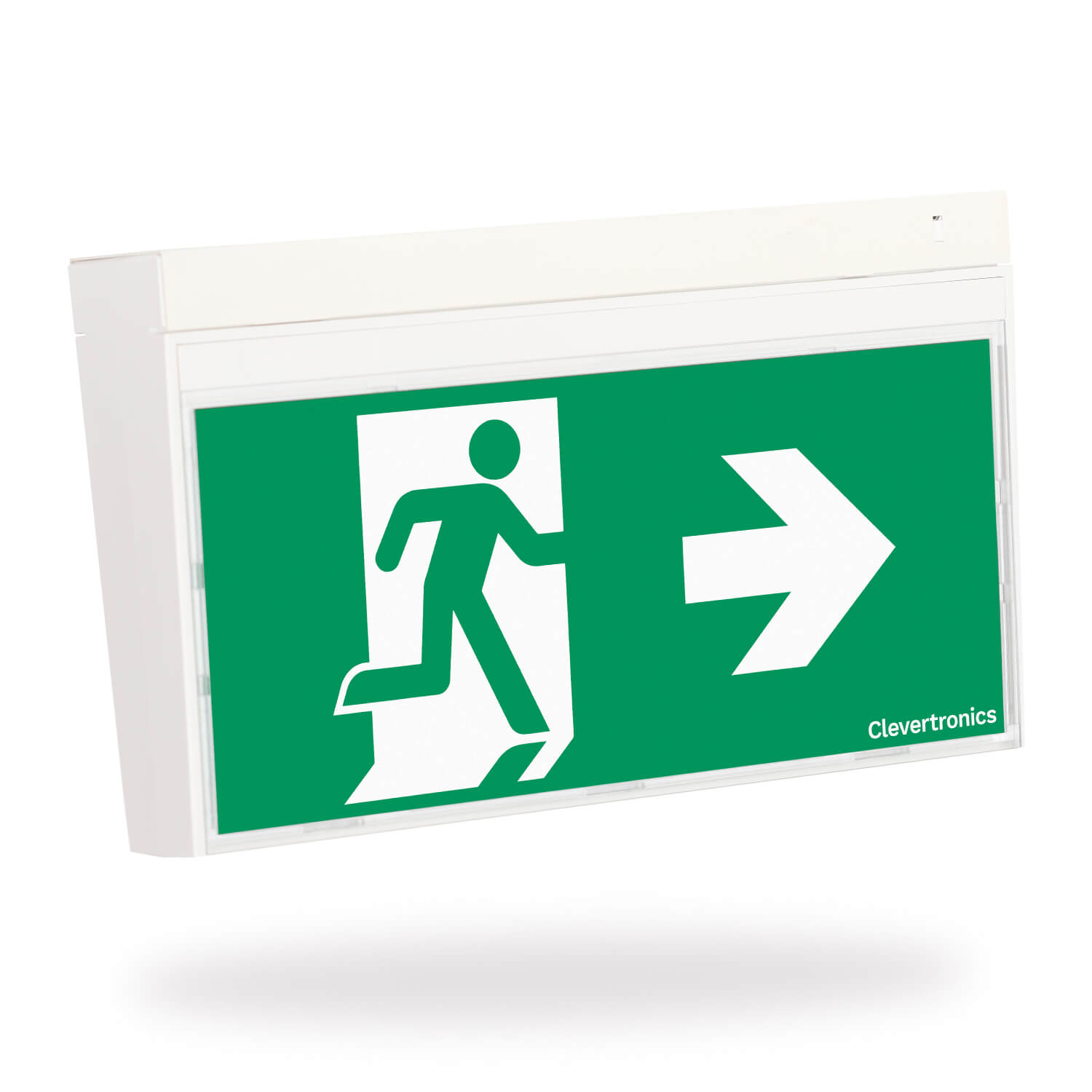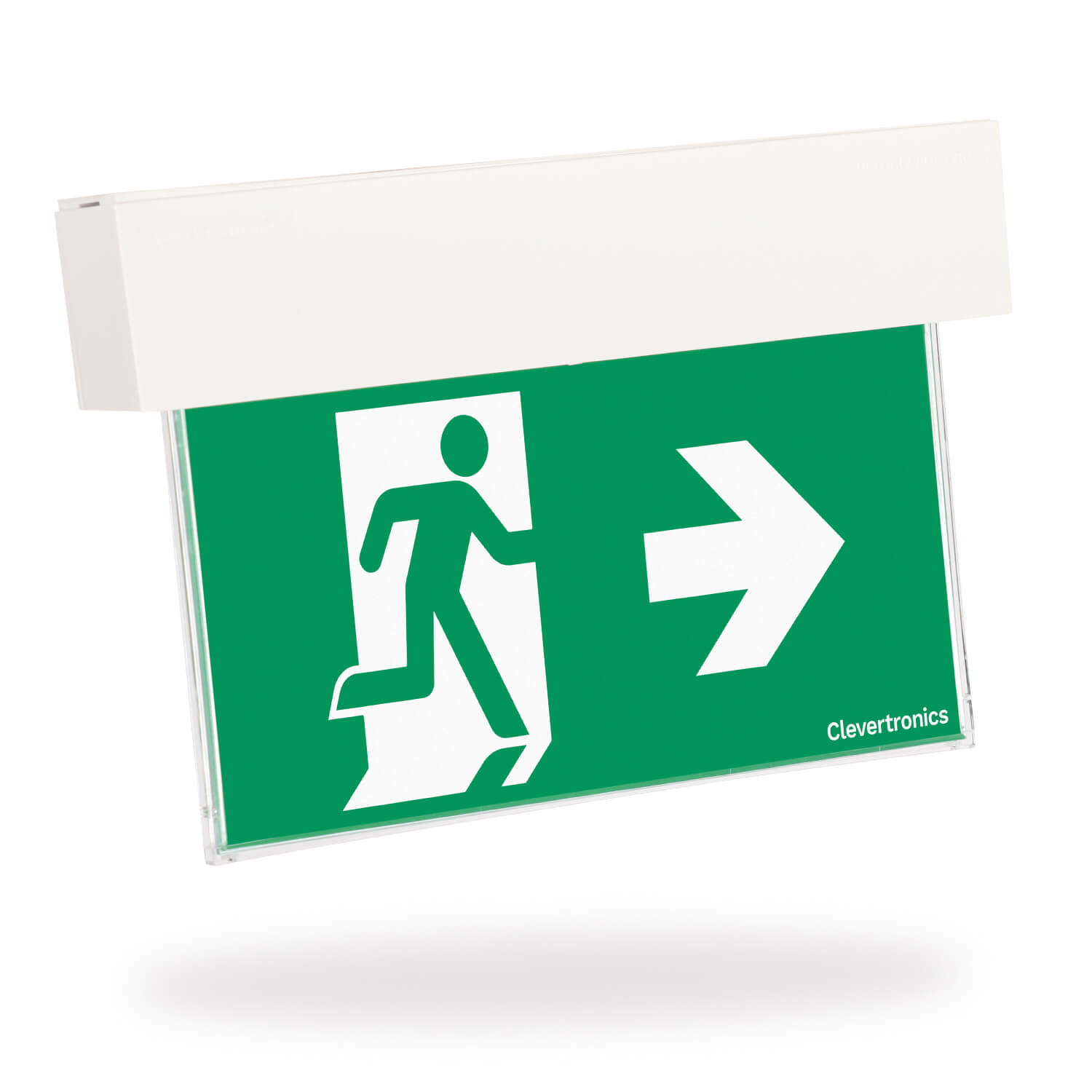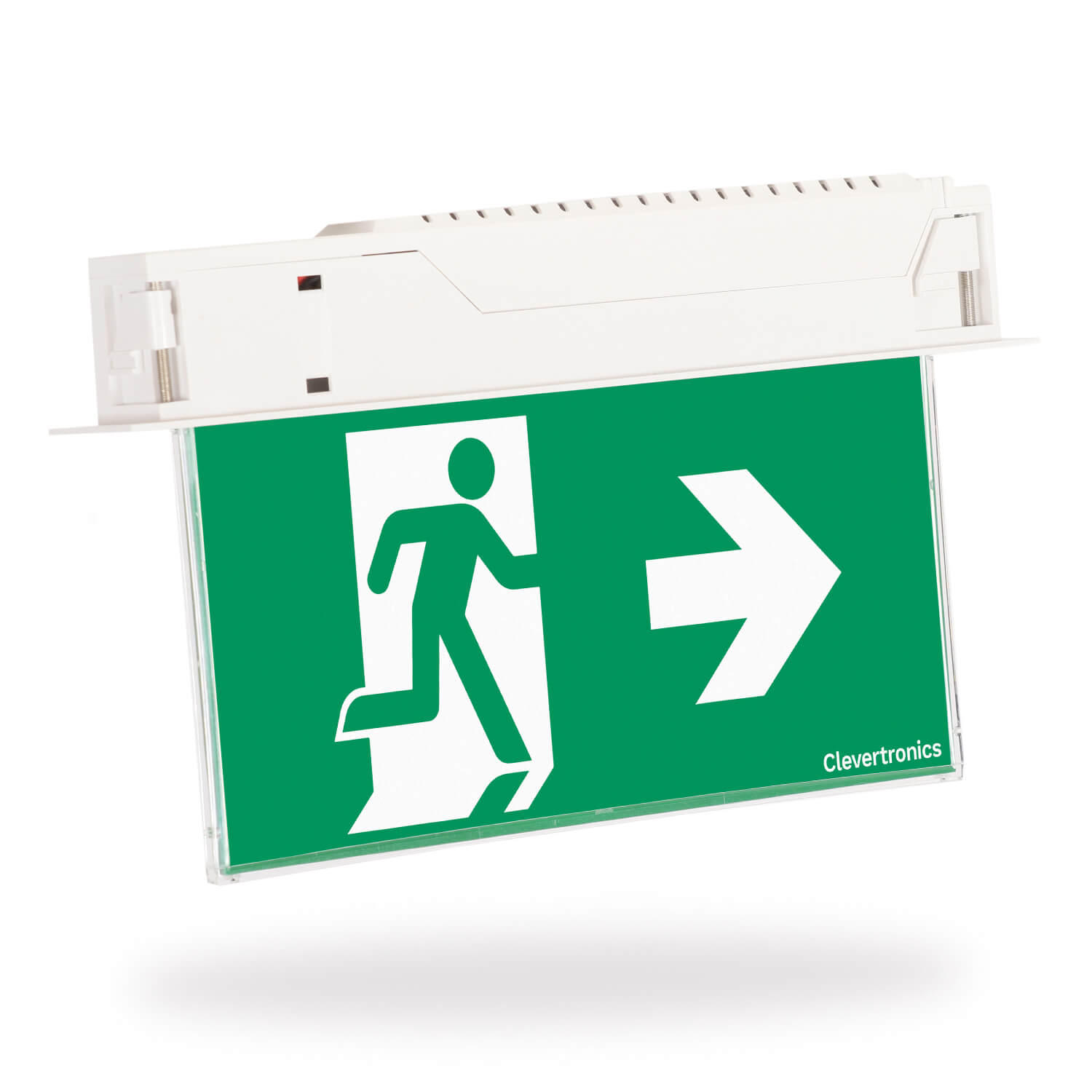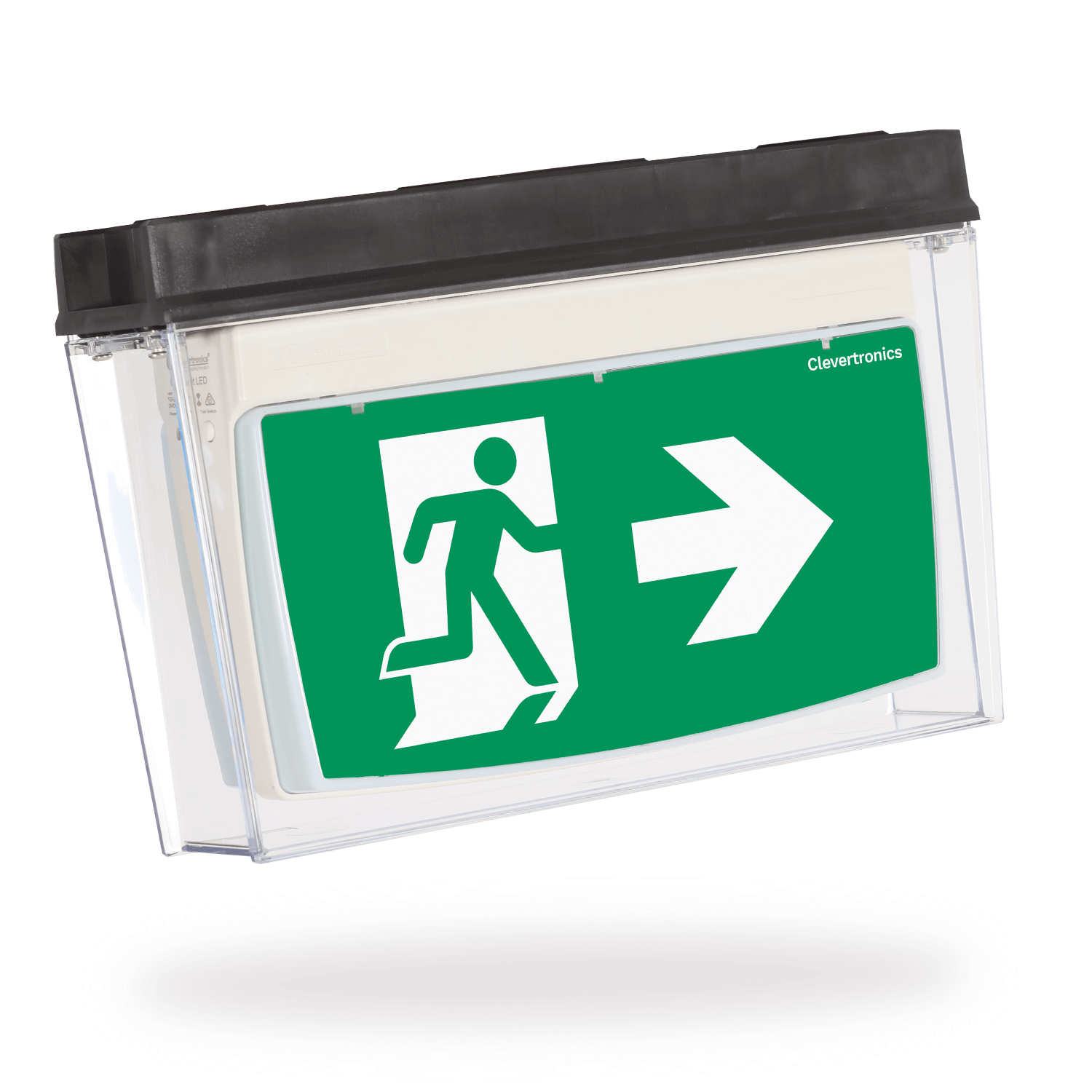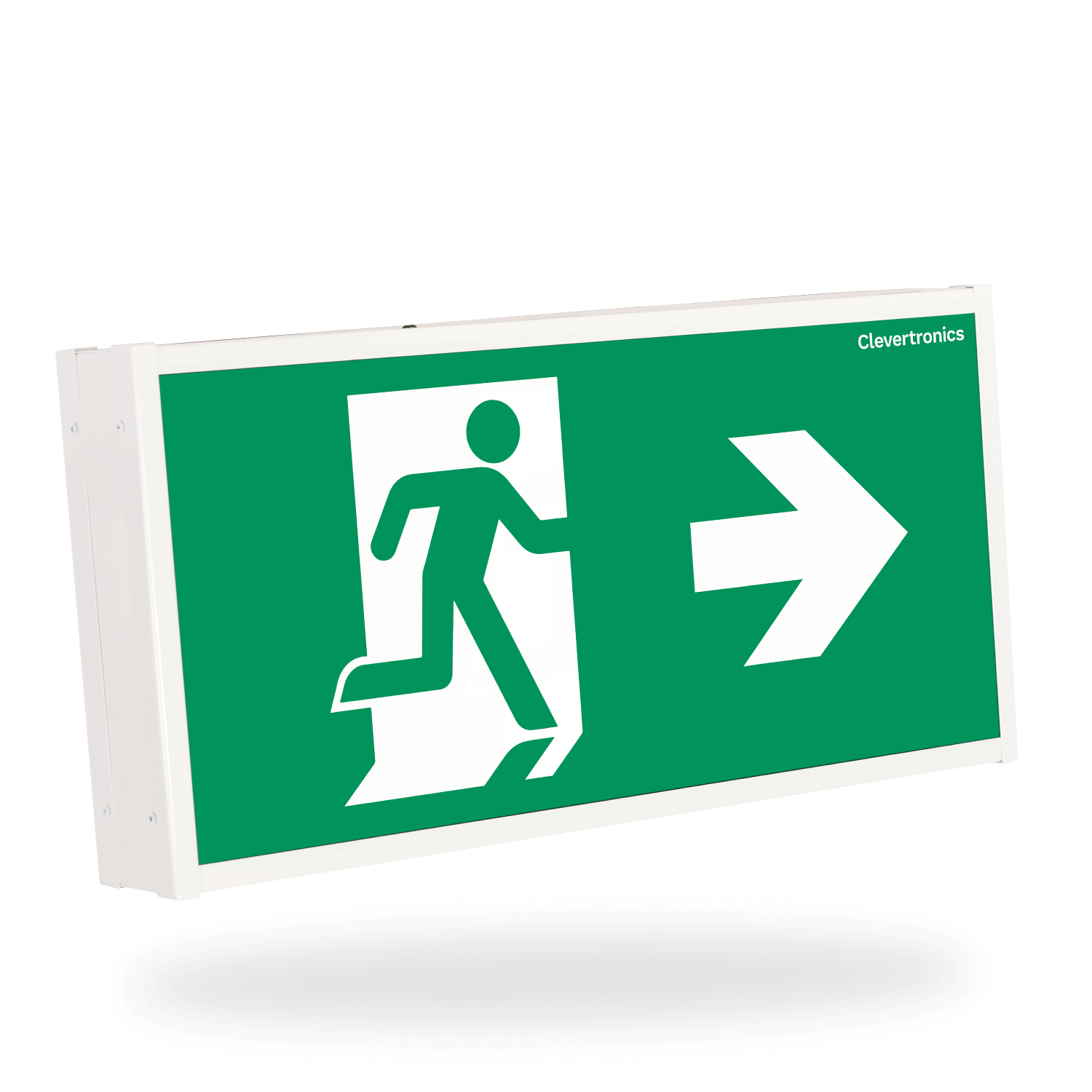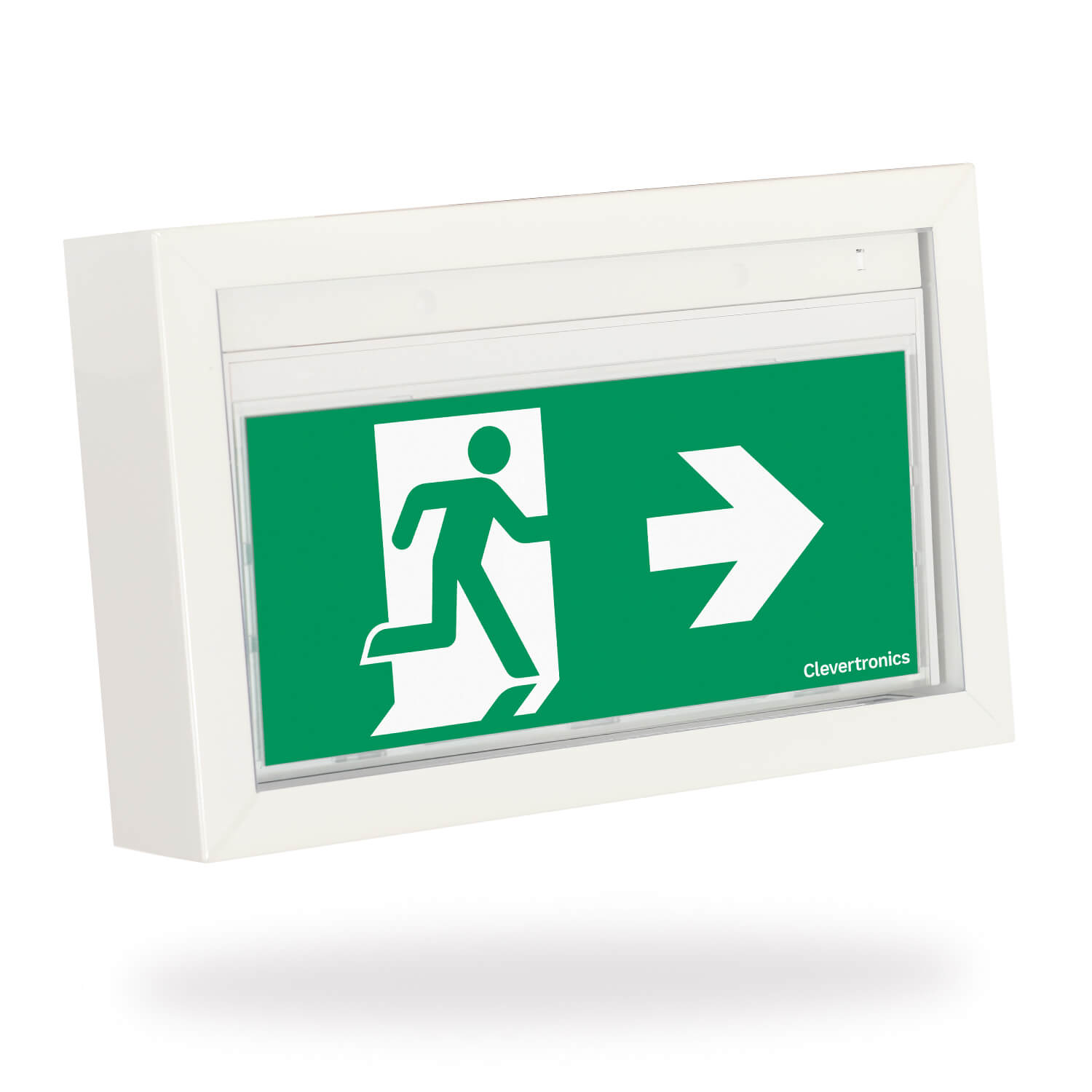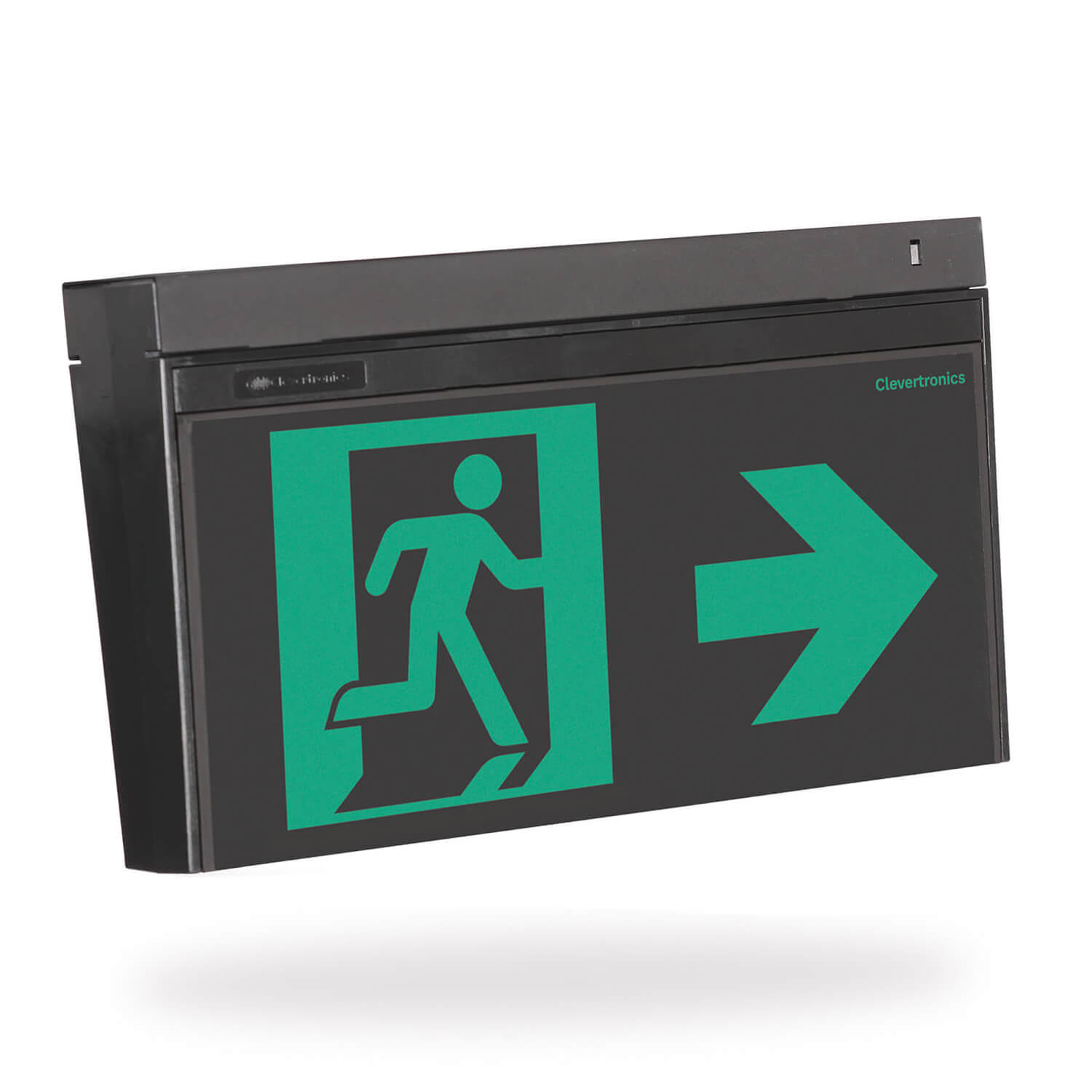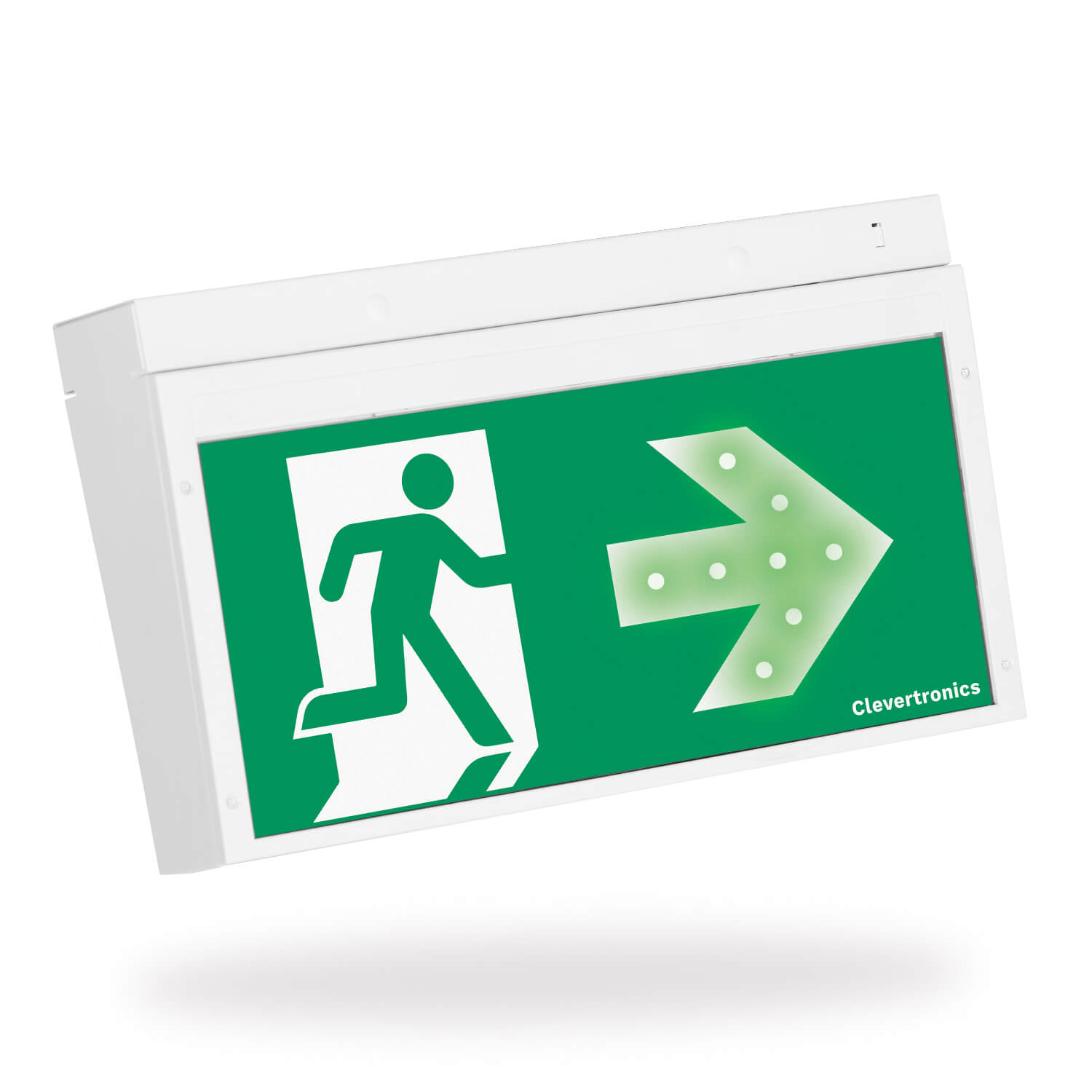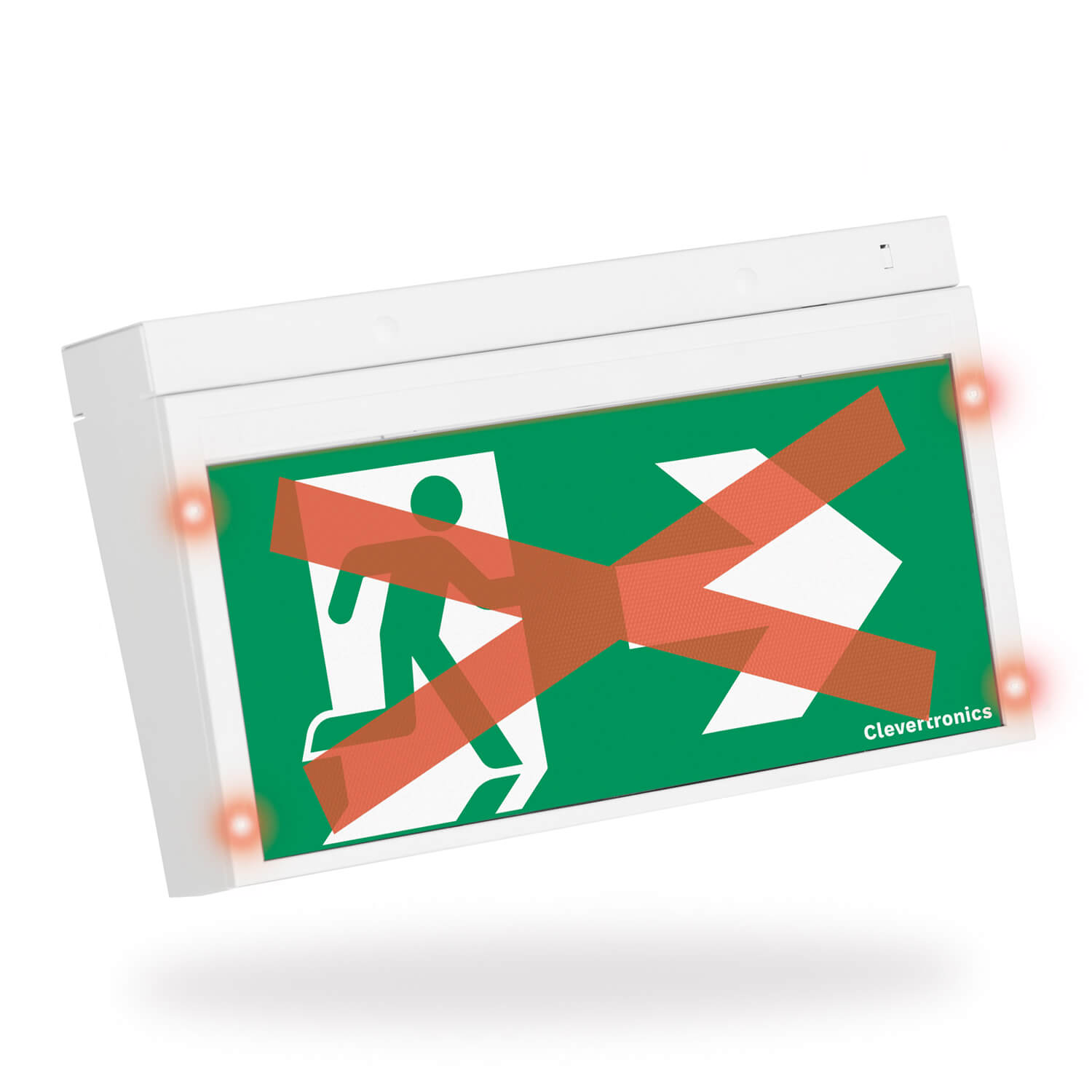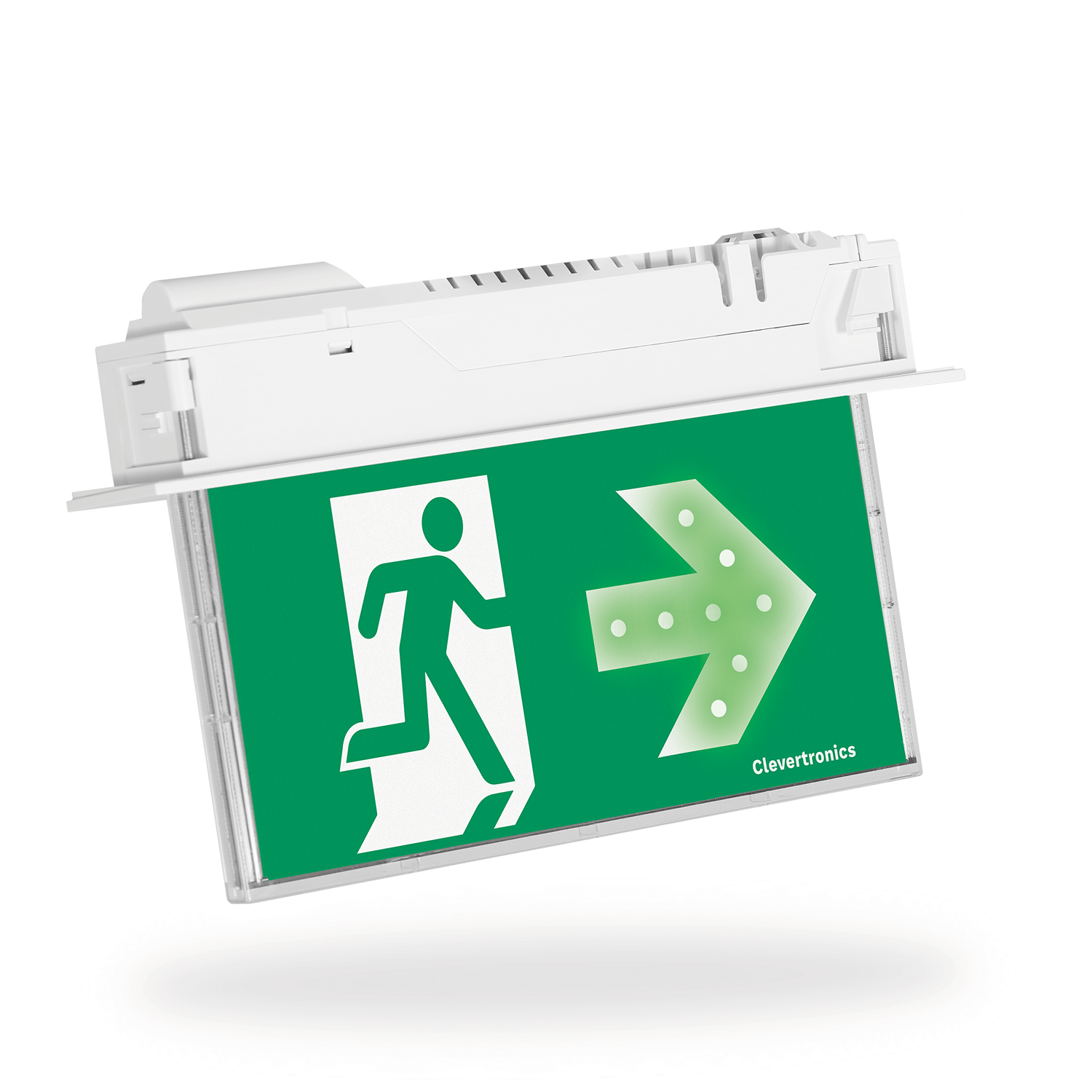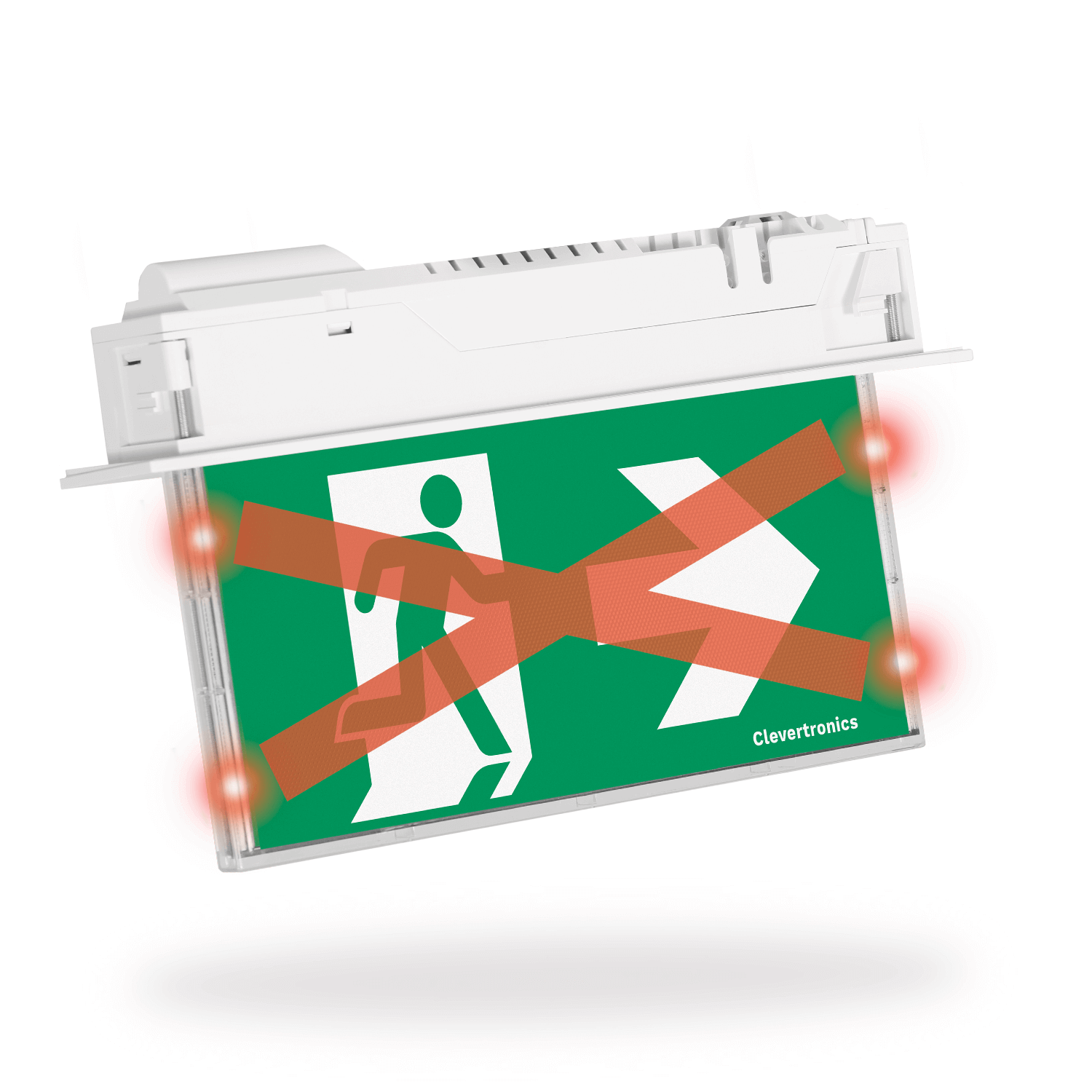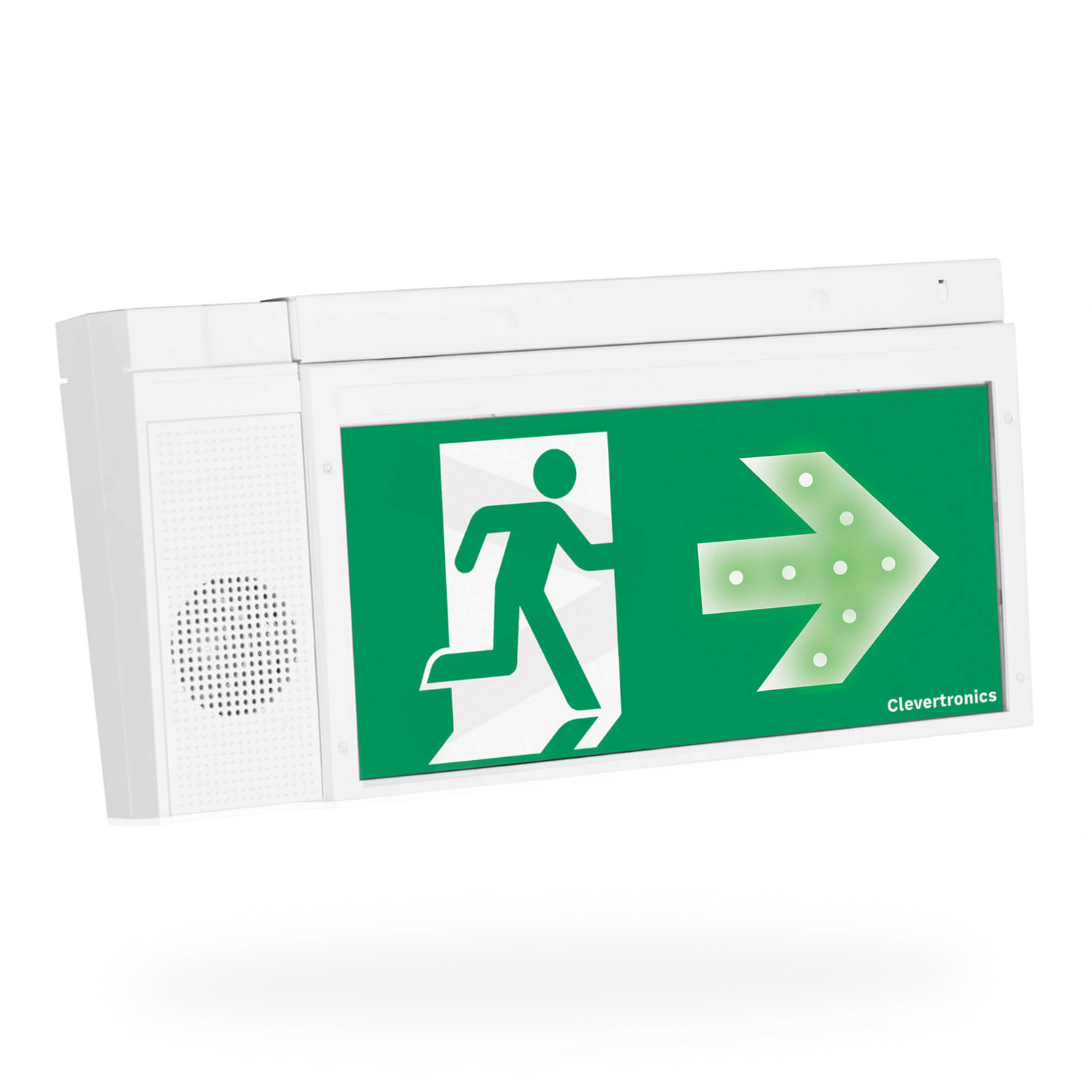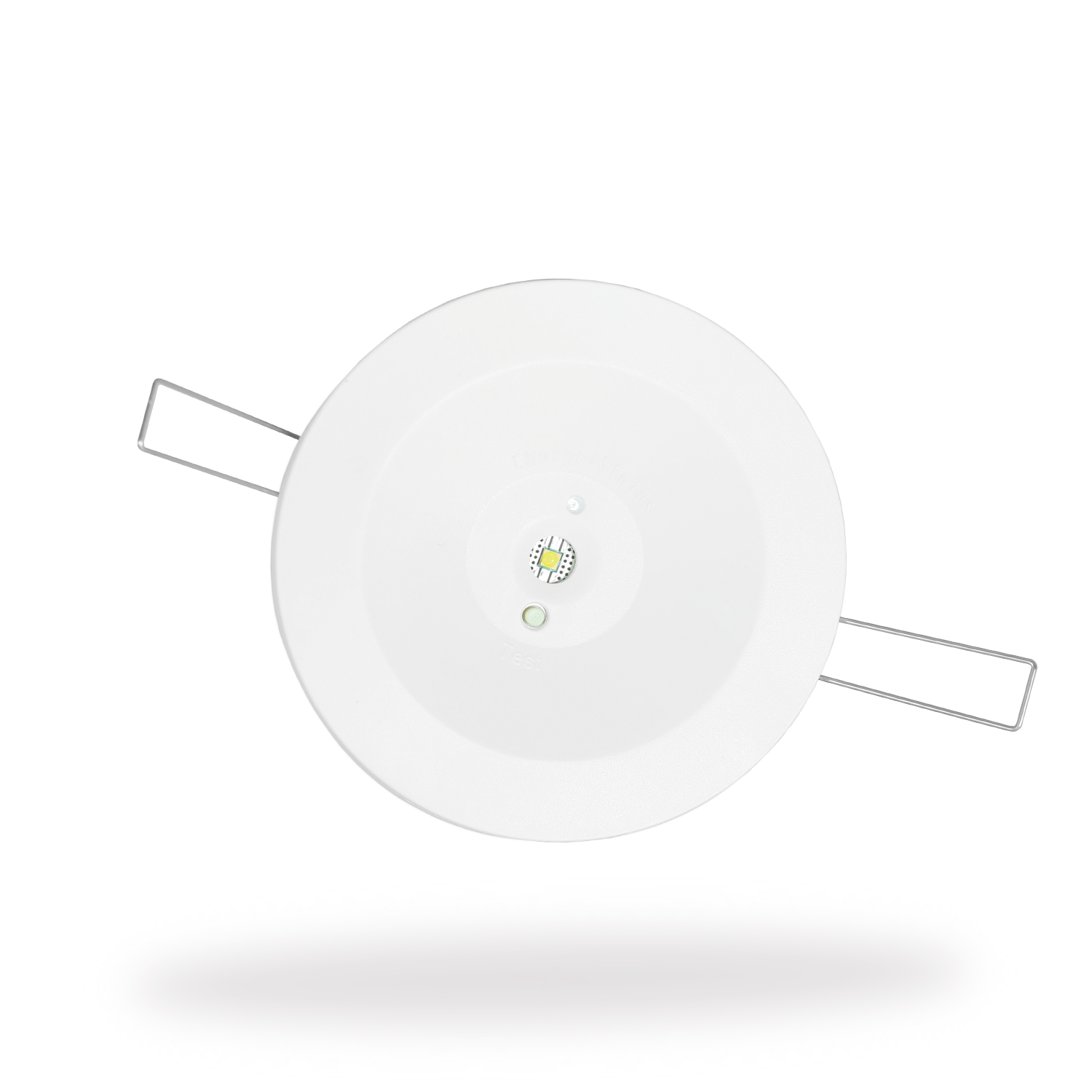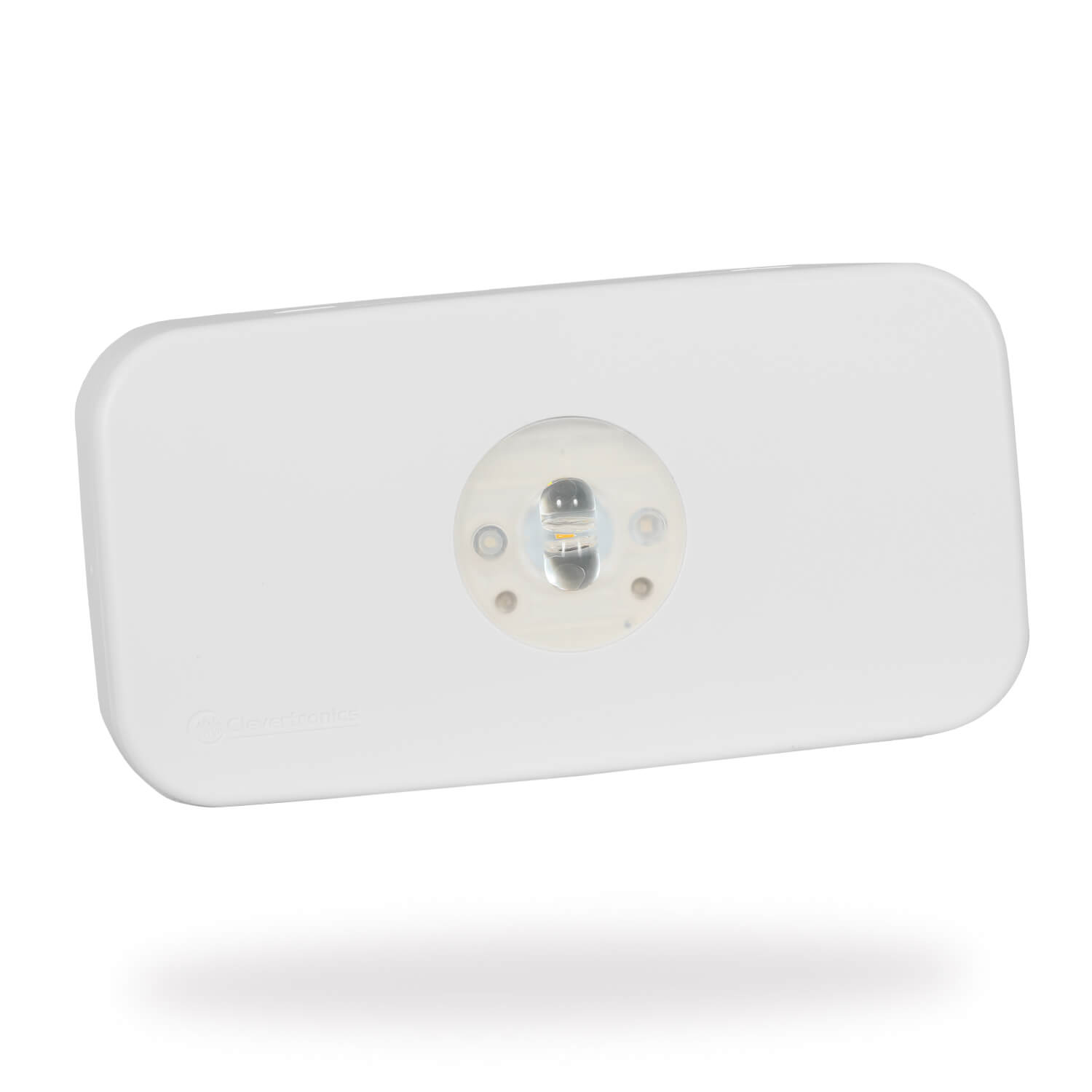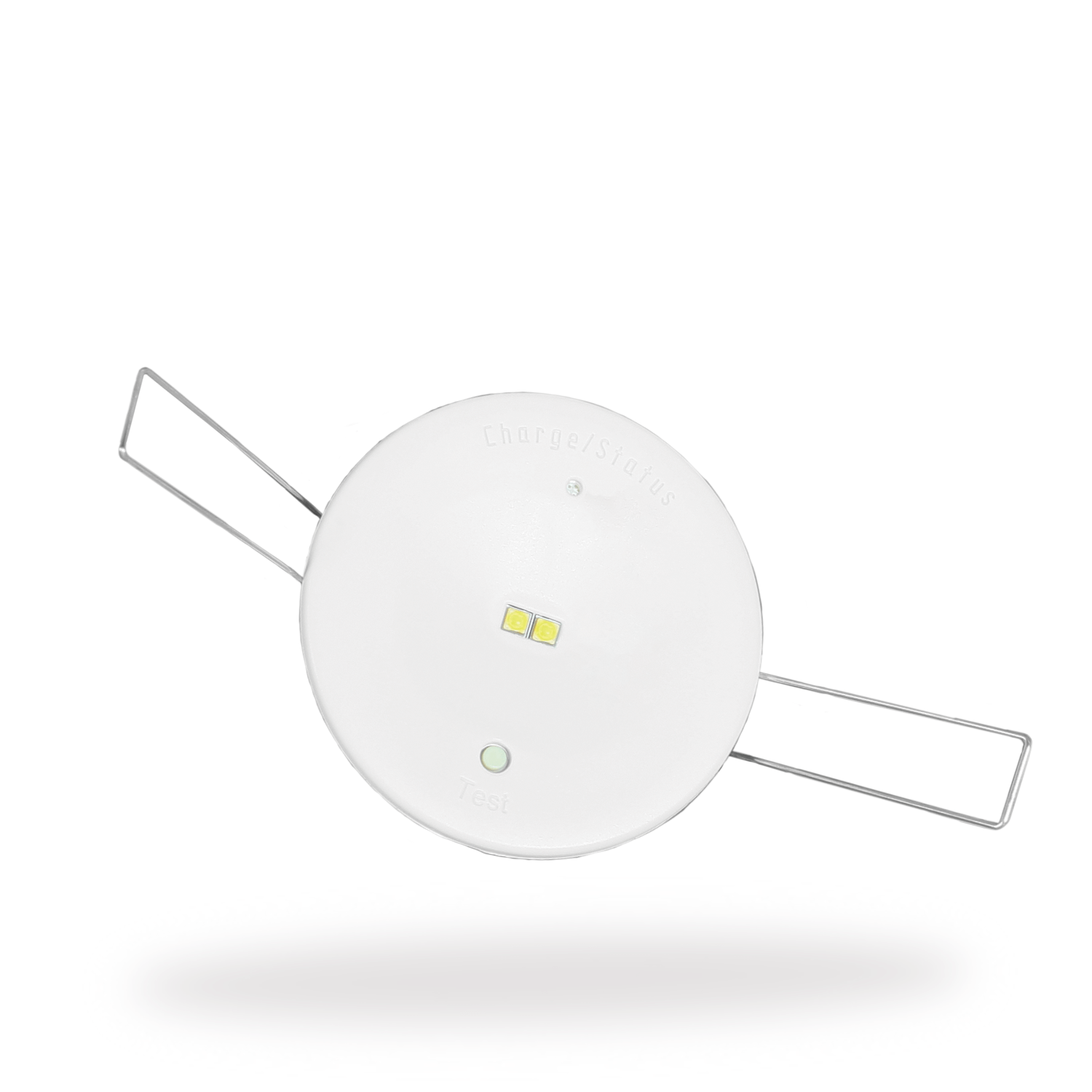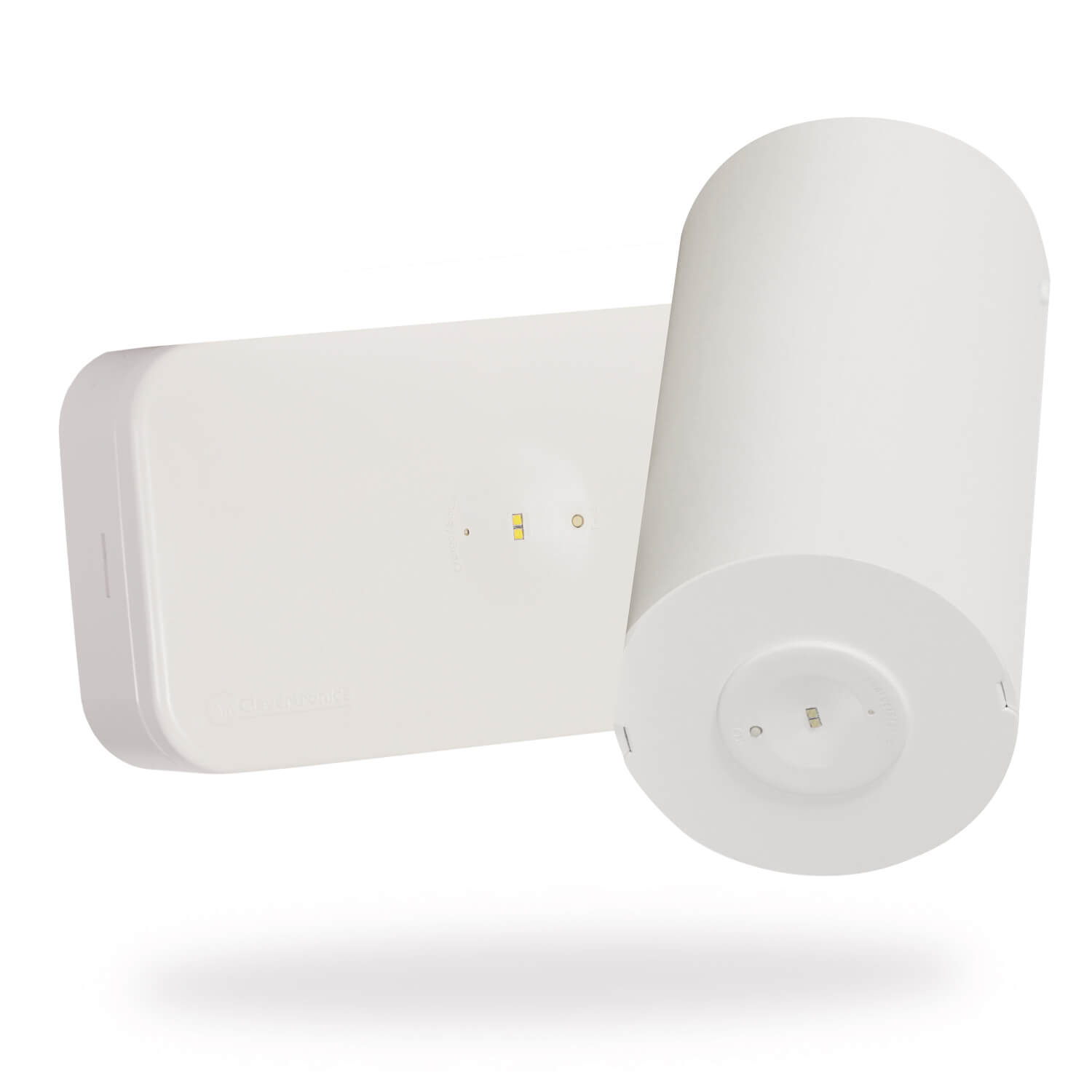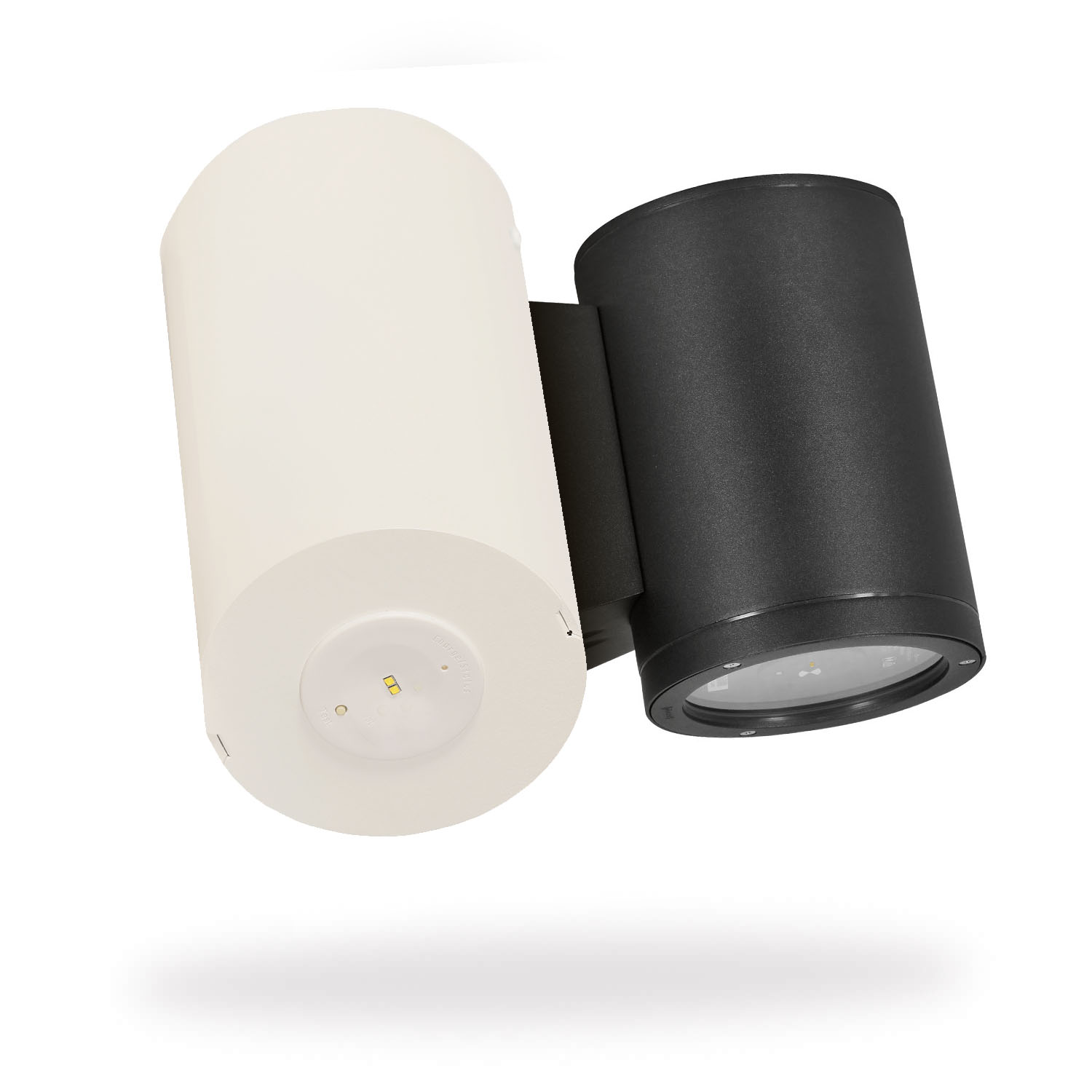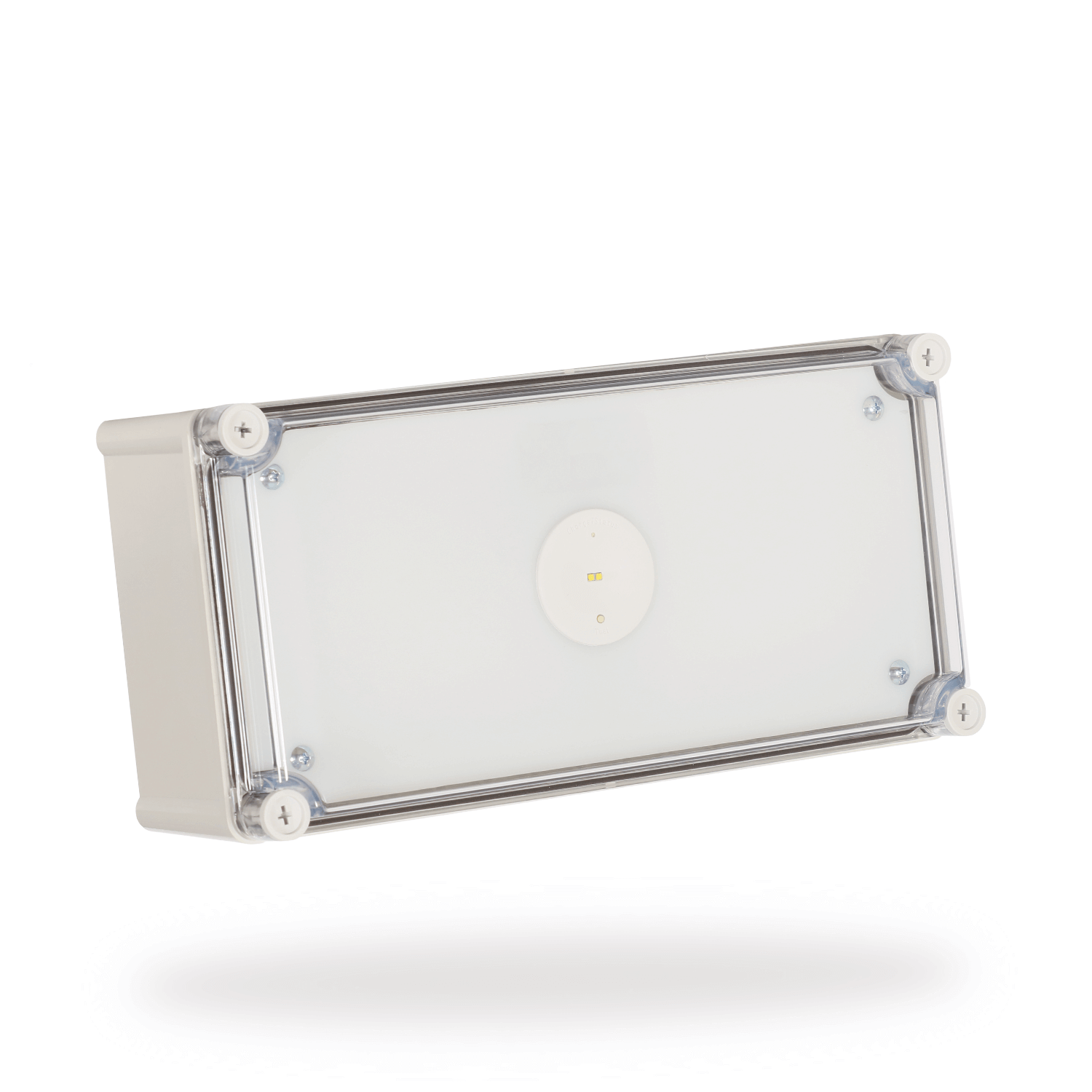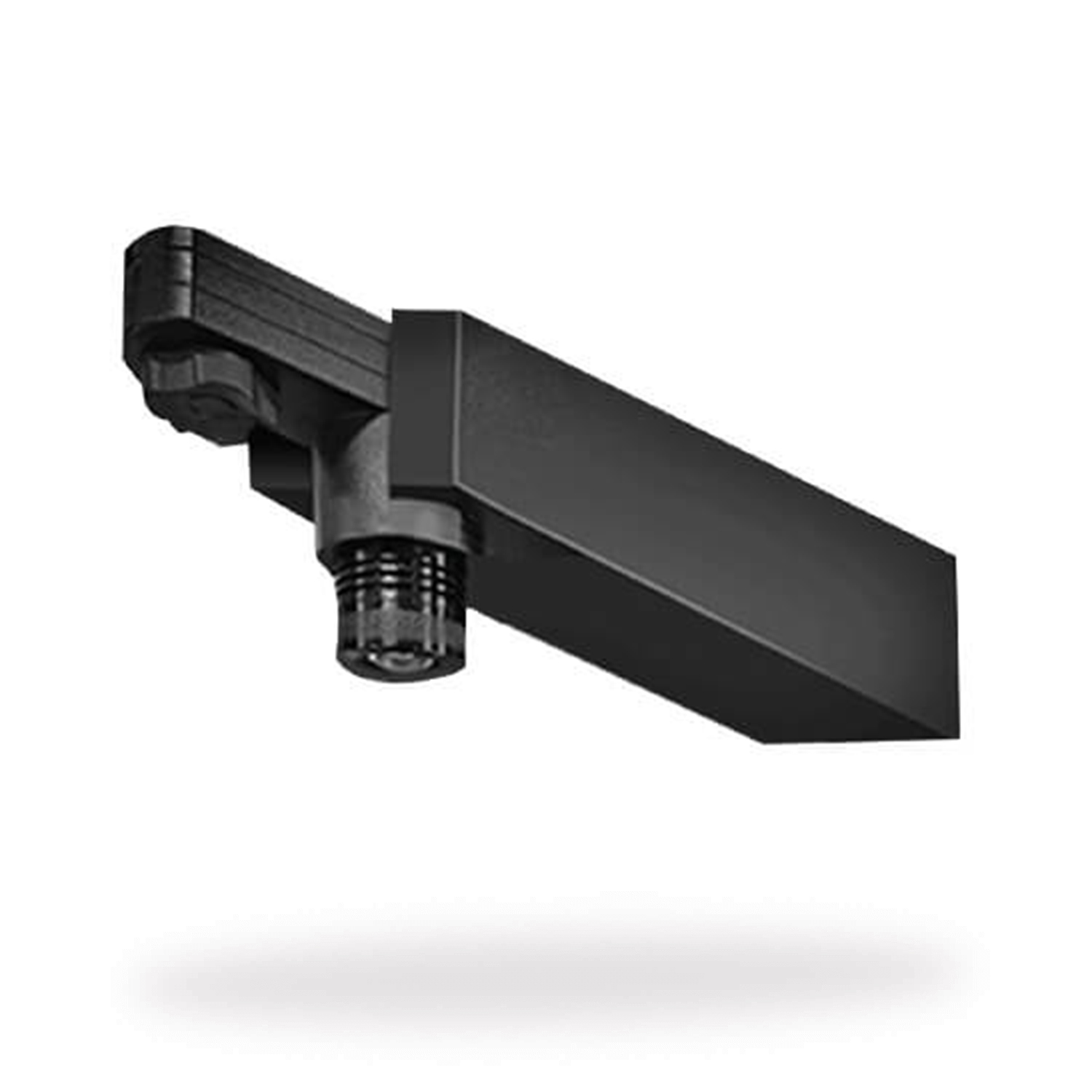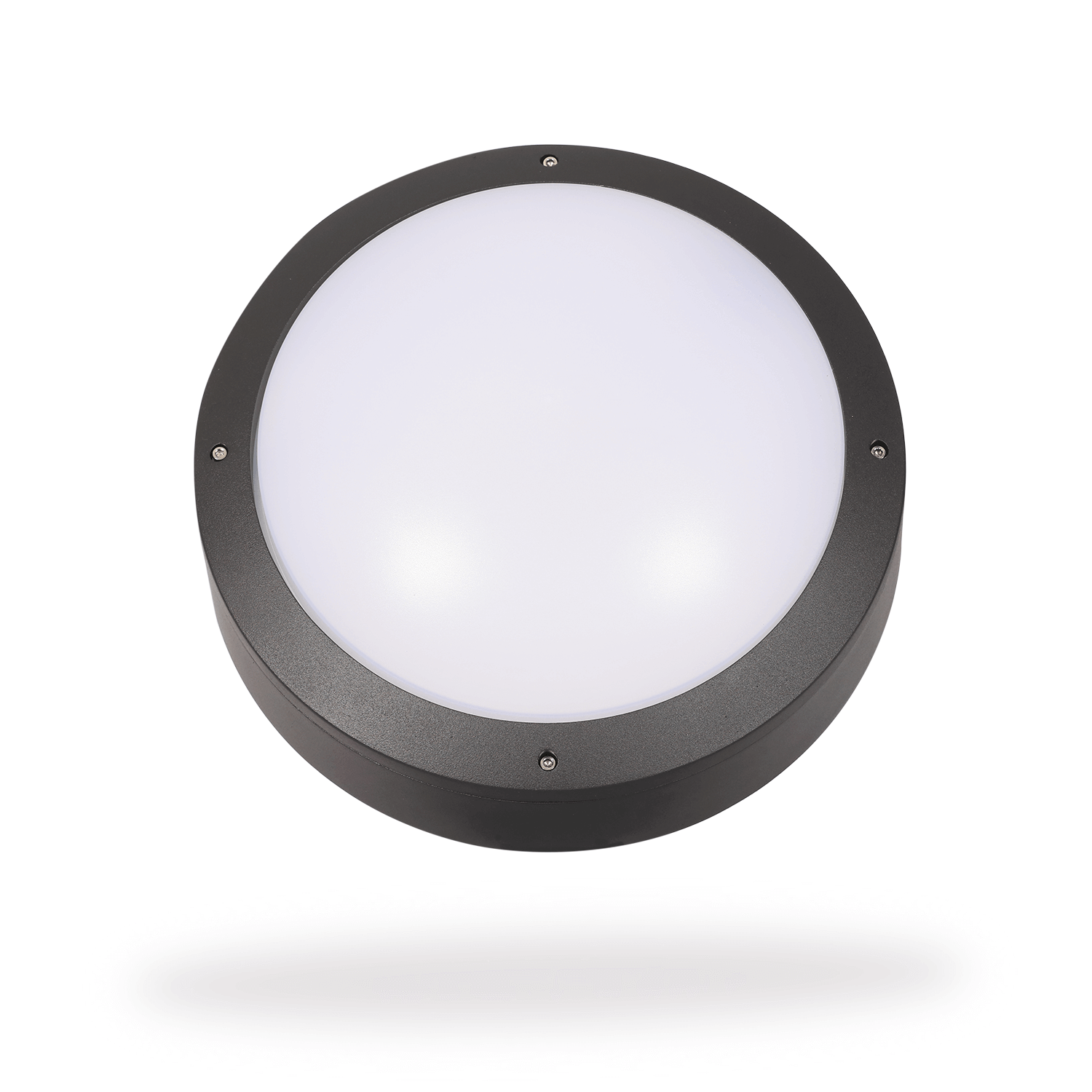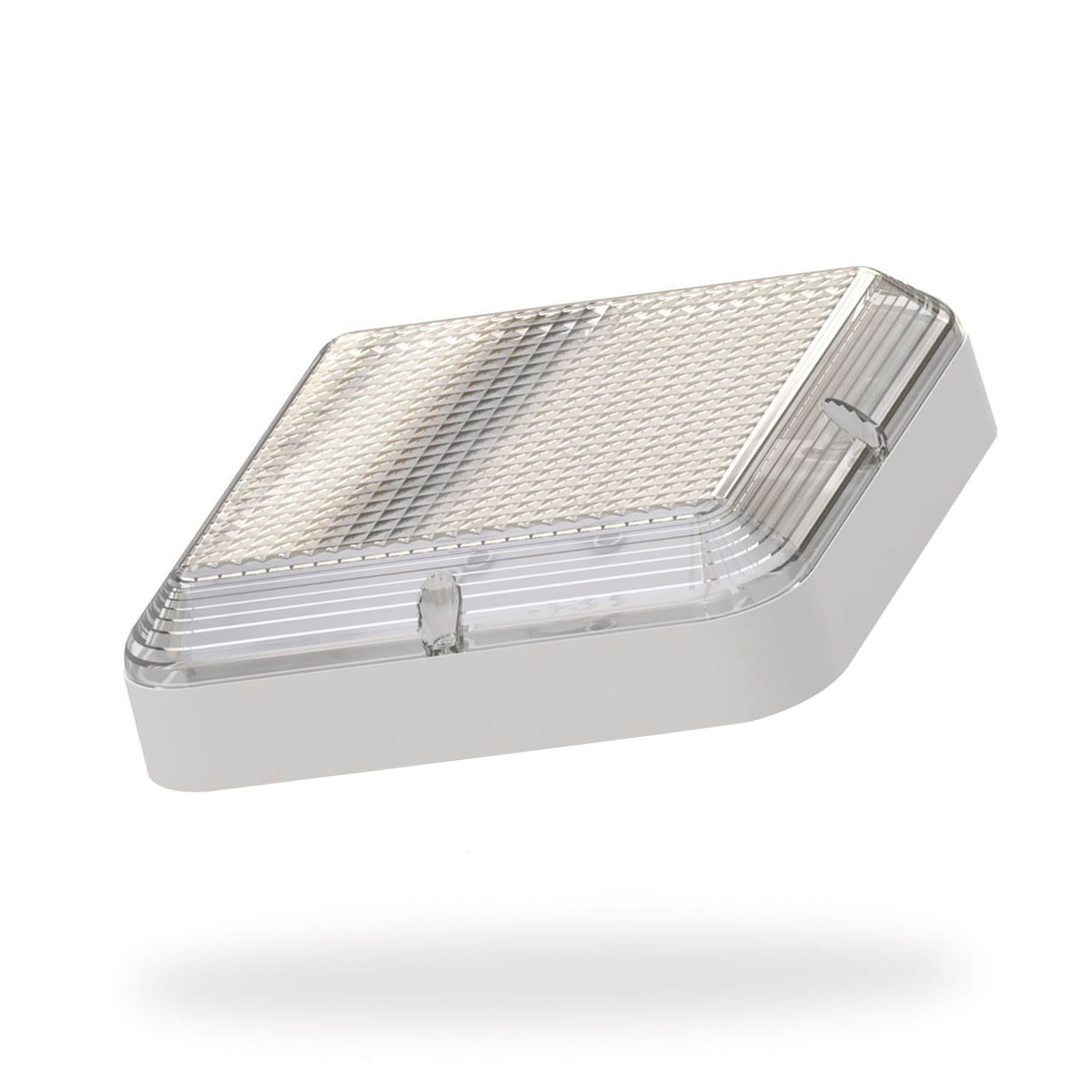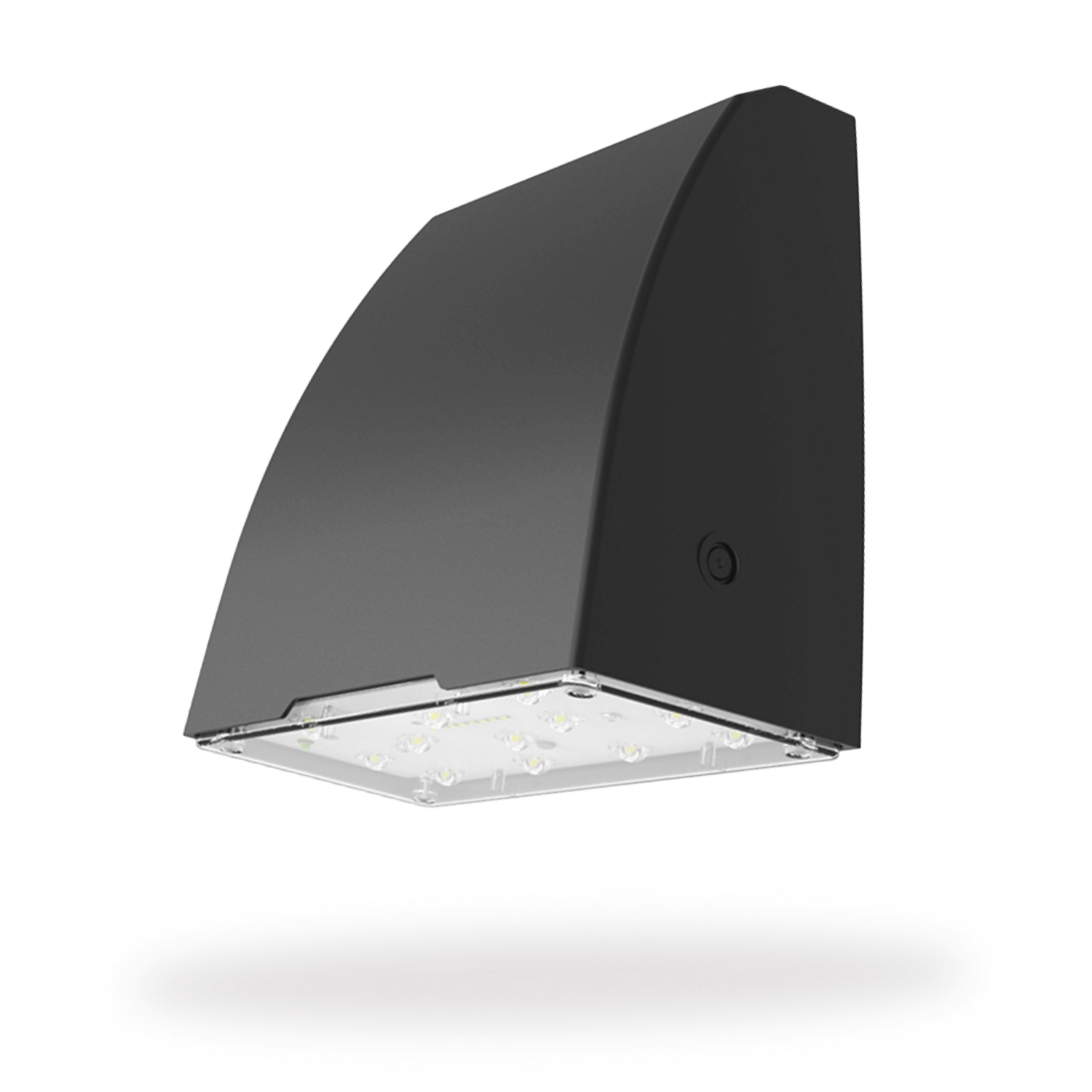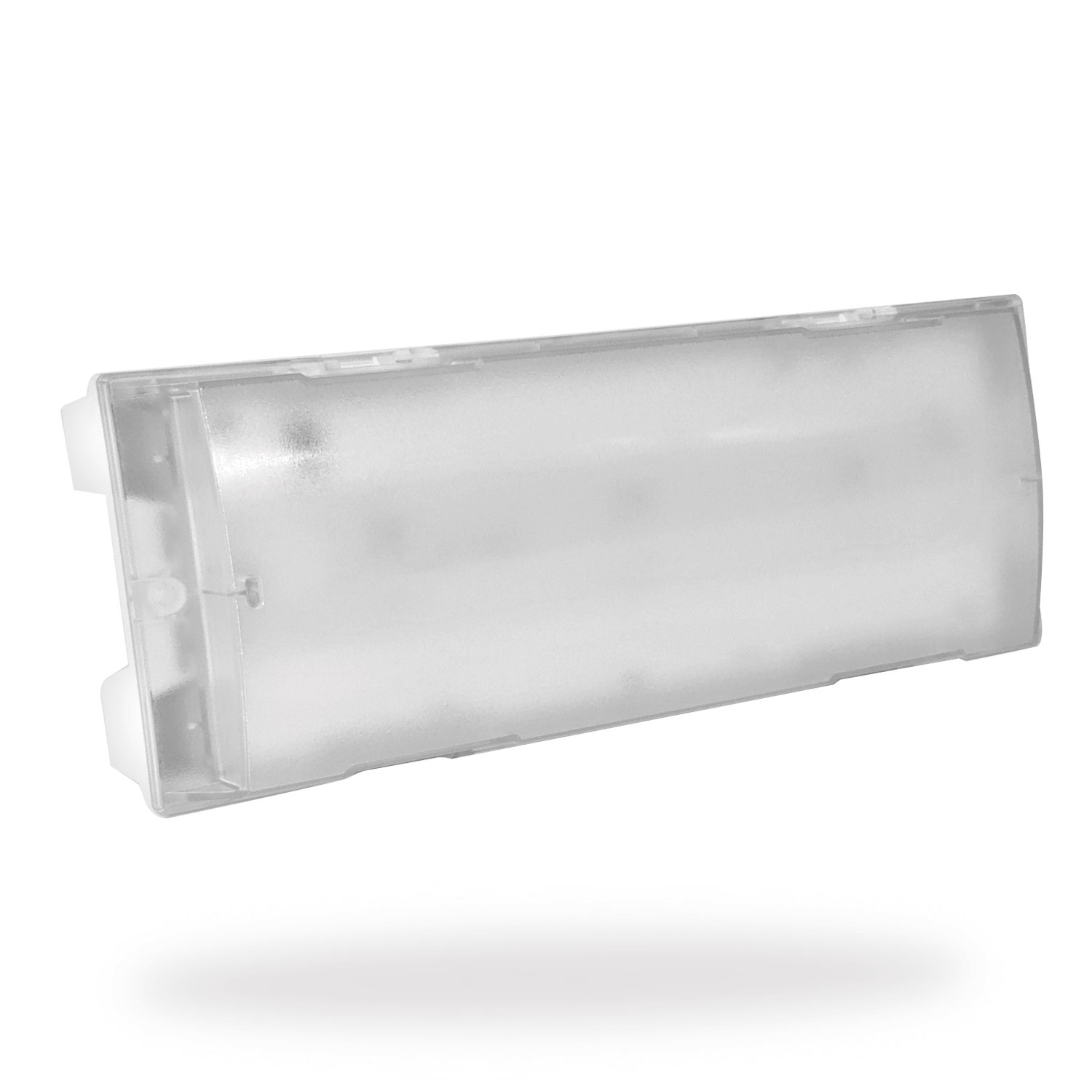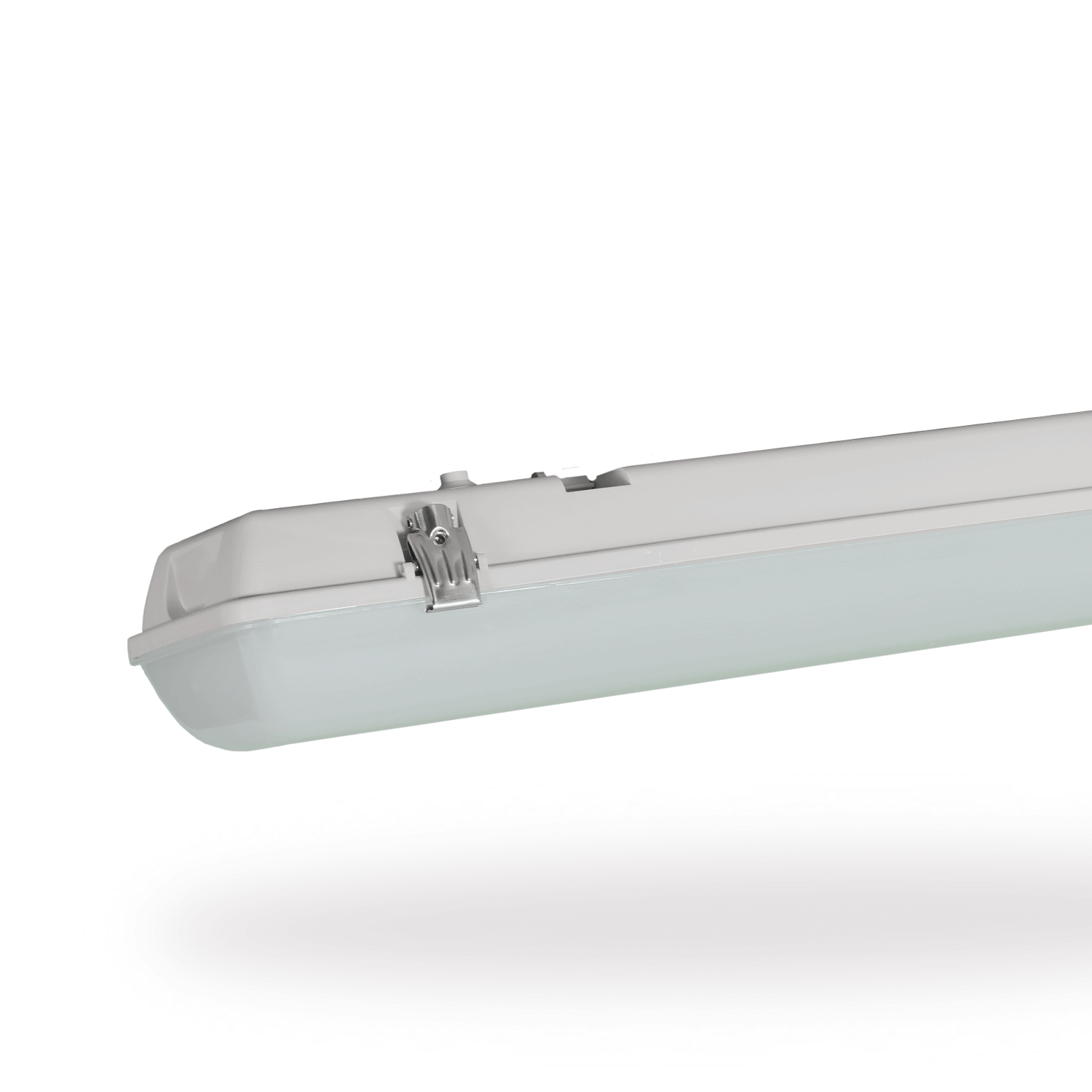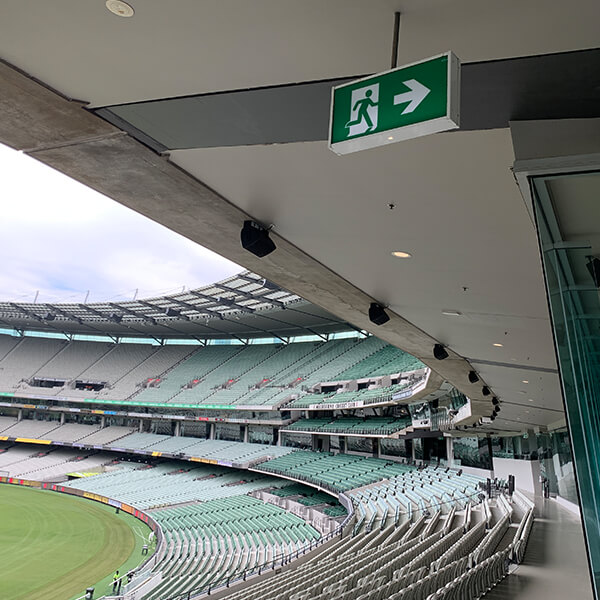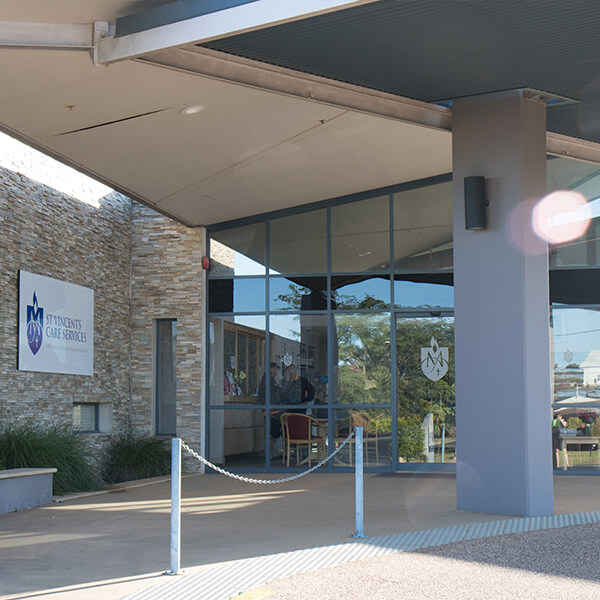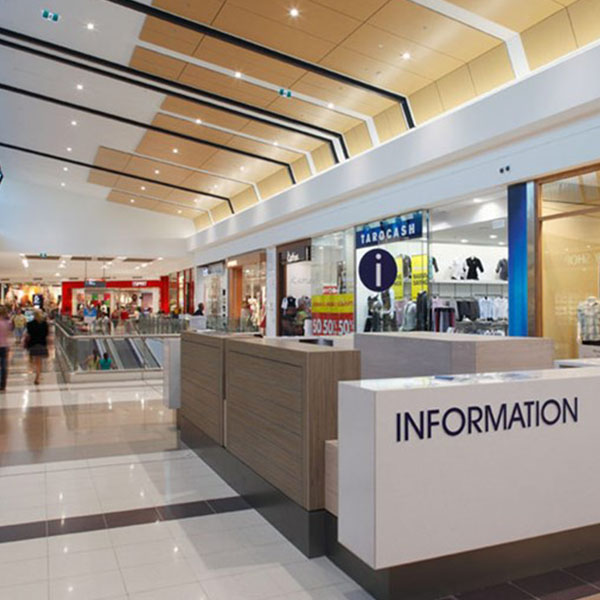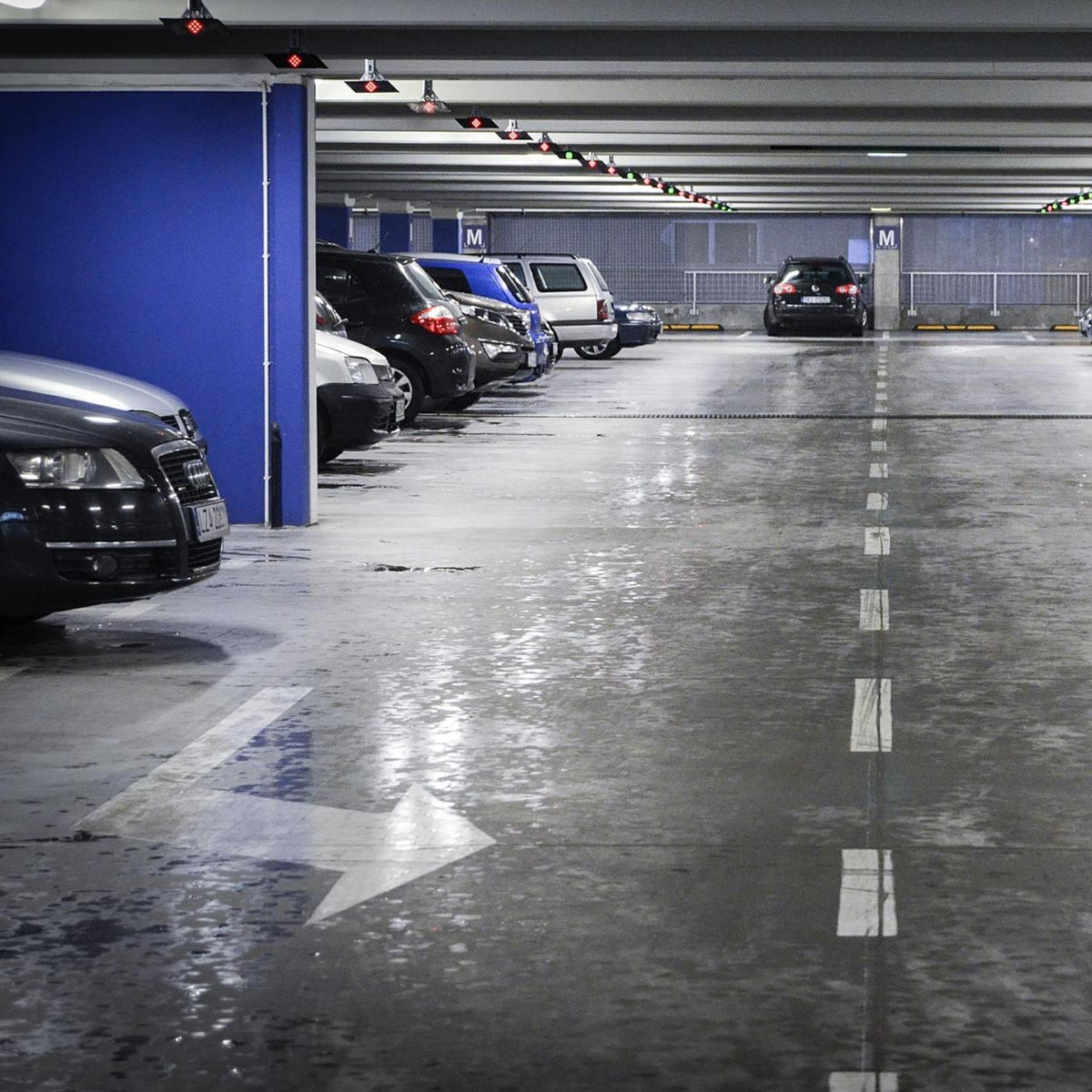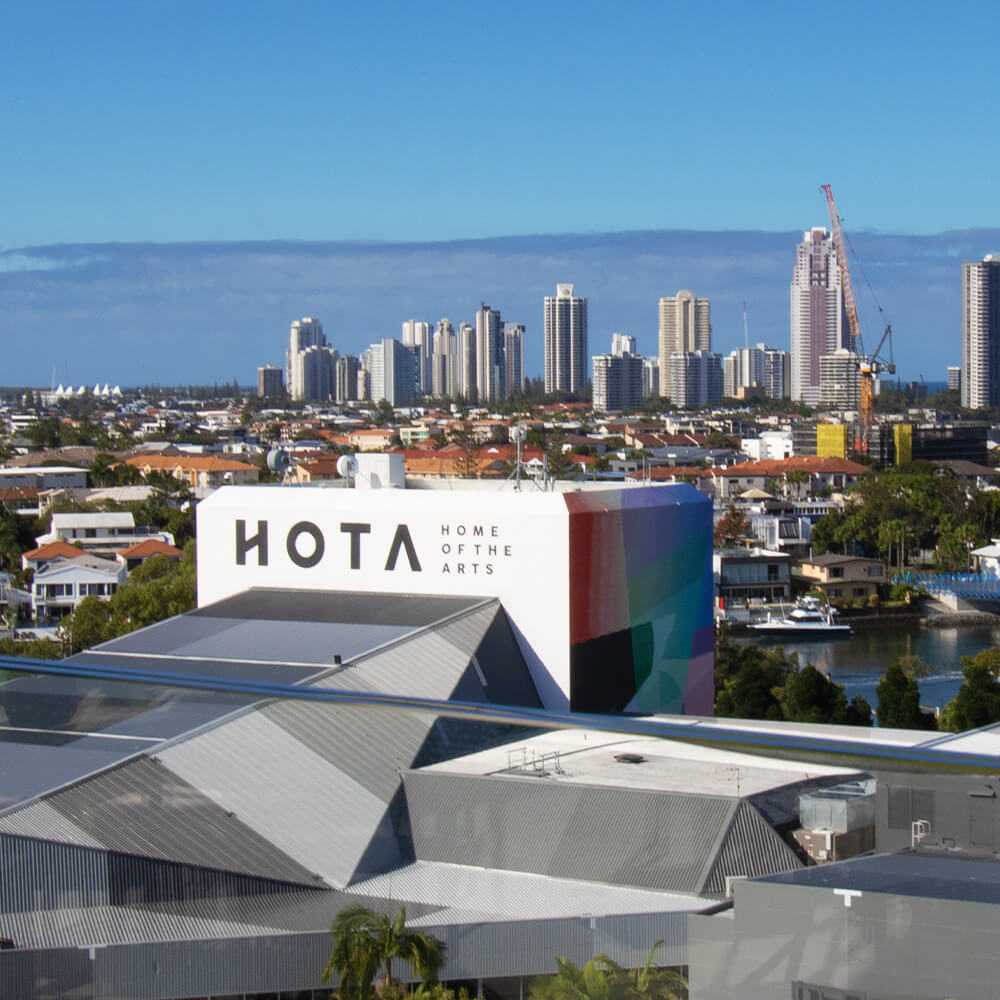Introducing Zoneworks® XT HIVE
Zoneworks is the world’s most advanced emergency lighting system with over 1,500 sites installed across Australia, New Zealand and the UK.
The introduction of Zoneworks XT HIVE is a significant milestone for the emergency lighting market as it has redefined the way emergency lighting is designed, installed and managed. XT HIVE is smarter and more advanced than any other system on the market.
Zoneworks XT HIVE reduces the backbone hardware requirements to a single RF controller and adds dynamic self-managed meshing technology to make your emergency lighting simpler, faster and easier than ever before.
• If you are designing an emergency lighting system, it is simpler
• If you are installing and commissioning emergency lighting, it is faster
• If you are managing emergency lighting, it is easier
Zoneworks XT HIVE will continue to be supported by a team of Advantage Lifetime Support specialists that ensure each system is looked after for its lifetime at no additional cost. It’s just what we do.
Zoneworks® XT HIVE Overview
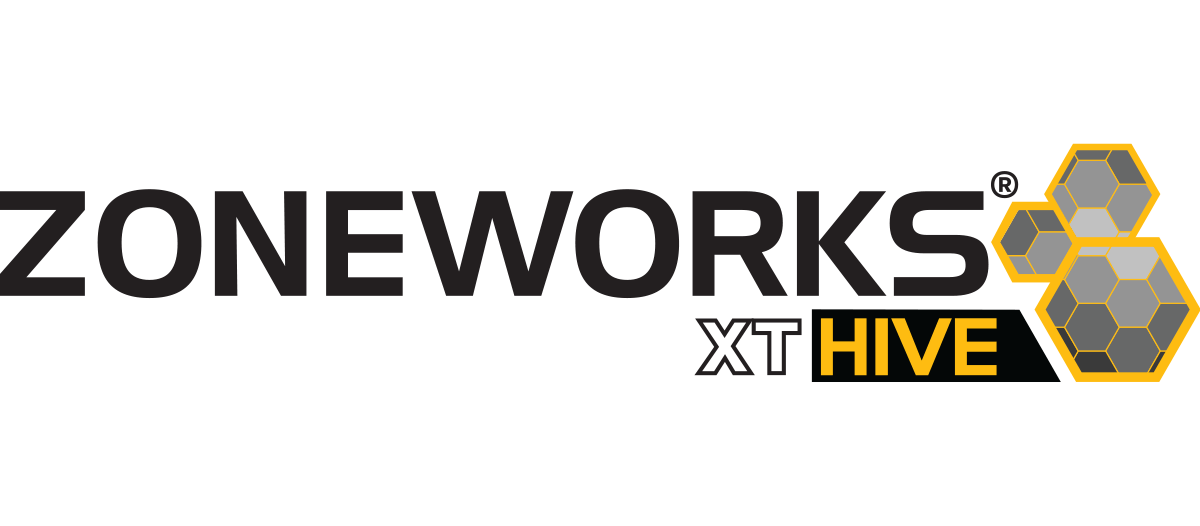
Zoneworks XT HIVE introduces Dynamic Self-Managed (DSM) Meshing
• One single RF controller for 1,000 fittings
• Unlimited fittings per system
• Highest data throughput and performance
Less backbone = Less cost
Zoneworks XT HIVE features the absolute simplest RF backbone set up for any site.
• Every fitting self-discovers other fittings around it to form “colonies” that dynamically build the network
• Maximising the efficiency of the overall network
• Minimising commissioning and system management time
DSM Meshing = Faster & more reliable
Find a
Zoneworks® XT Hive Product
Zoneworks XT HIVE is compatible with the extensive CLP Premium and L10 Nanophosphate ranges across exit, emergency, linears and specialised fittings. Clevertronics have dedicated engineering resources to ensure we can satisfy the requirements of every project.
Zoneworks XT HIVE Backbone & Connectivity
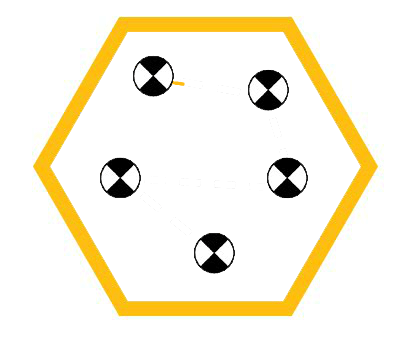
Step 1:
Automatically Mesh Devices
Once HIVE fittings are installed and powered up they automatically create a network by self-discovering others around them using dynamic self-managed meshing (DSM Meshing).

Step 2:
Enable the Controller
Switch on the controller to provide access and control of the emergency lighting system.
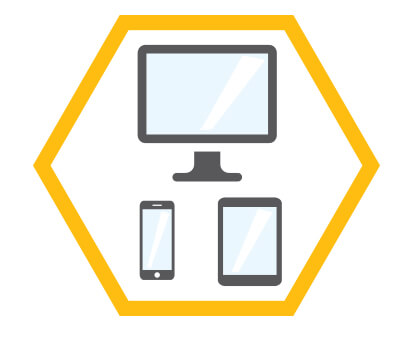
Step 3:
Create Your Log Book
The fitting register can now be easily uploaded via spreadsheet, and a smartphone or tablet can be used to perform local fitting diagnostics and identification.
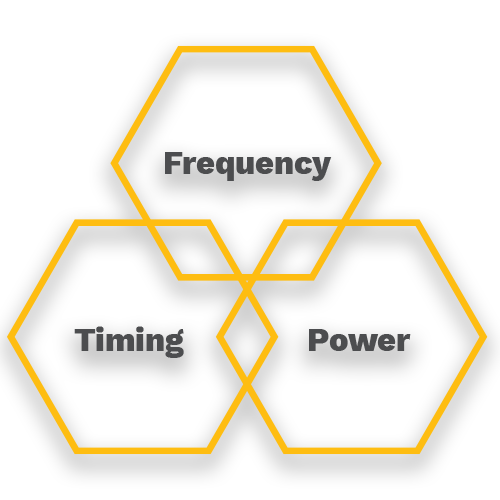
Dynamic Self-Managed Meshing
(DSM Meshing)
DSM Meshing manages the optimal communication path of each fitting using frequency, signal strength and timing. This ultra-fast data network enables real-time analytics and response. In a 1000 fitting network, the collection of status and test results average one second or less per fitting, this ensures a fast and less complicated process when commissioning, testing and performing maintenance.
When the Zoneworks XT HIVE fittings are powered up they self-discover surrounding fittings to automatically form a network.

Dynamic
A force that stimulates change or progress within a system or process

Self-Managed
Making your own decisions about how to organize your work, rather than being led or controlled
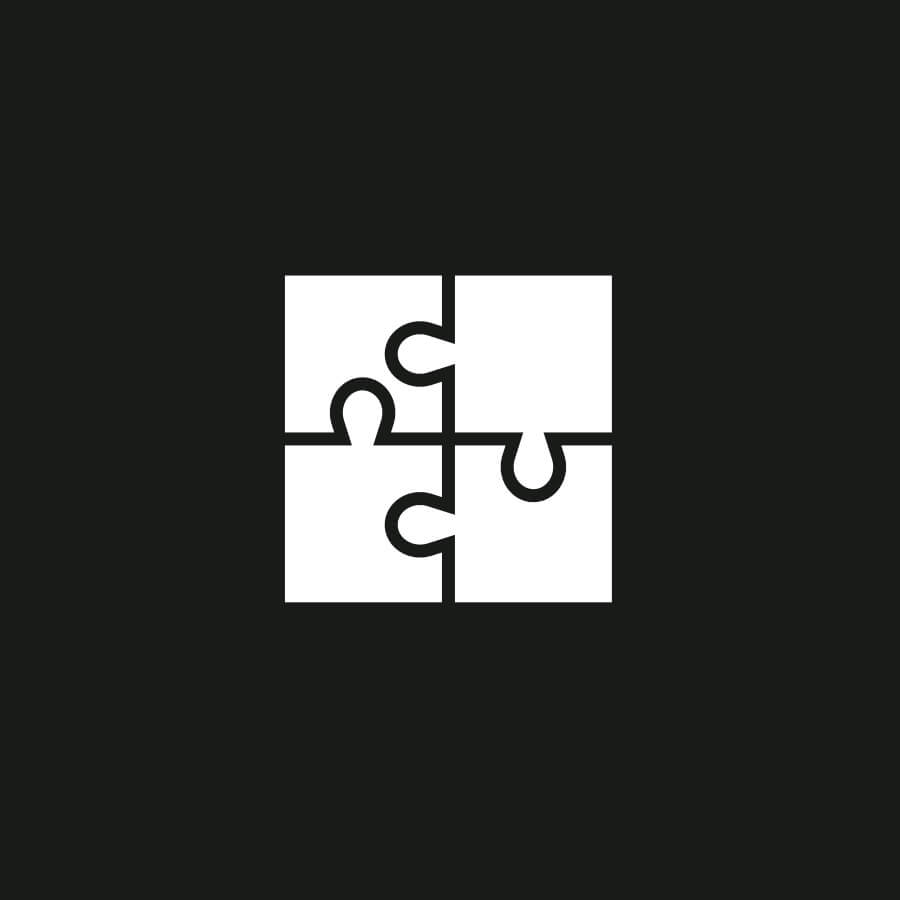
Meshing
To join together to form strong links enabling end-to-end connections
Backbone Design & Installation
A single HIVE RF controller manages up to 1000 fittings, and the system can handle unlimited fittings by adding additional controllers on larger projects.
Zoneworks XT HIVE is simple because you don’t need this hardware:
- Additional Routers
- Additional Controller
- Additional Repeaters
- Additional Extenders
- Additional Couplers
- Additional Data Points
- Cable Between Fittings
Commissioning
A simple two-step process is used to commission a Zoneworks XT HIVE system.
Once HIVE fittings are installed and powered up they automatically create a network by self-discovering others around them using dynamic self-managed meshing (DSM Meshing), saving valuable commissioning time.
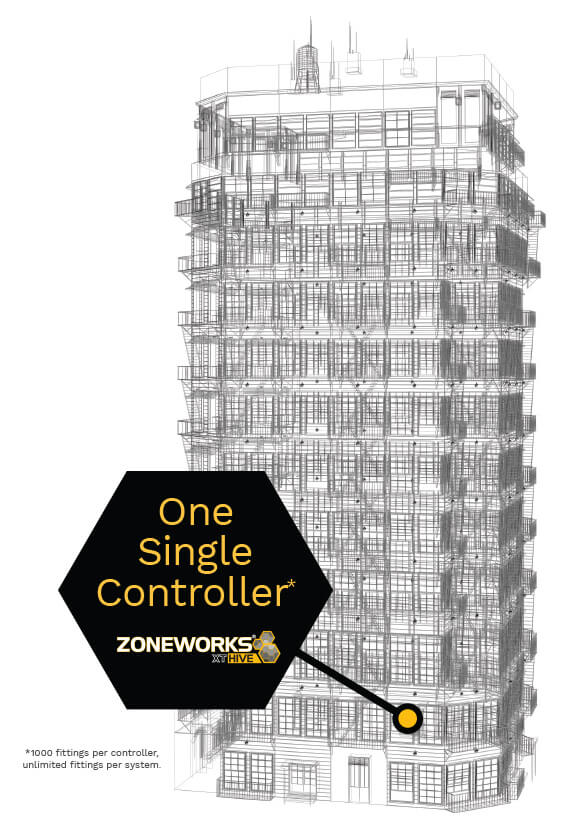
Step 1
Switch on the controller to provide access and control of the emergency lighting system.
Step 2
The fitting register is easily uploaded via a spreadsheet, and a smartphone or tablet can be used to perform local fitting diagnostics and identification where required.
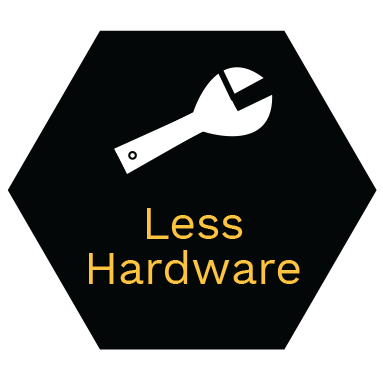
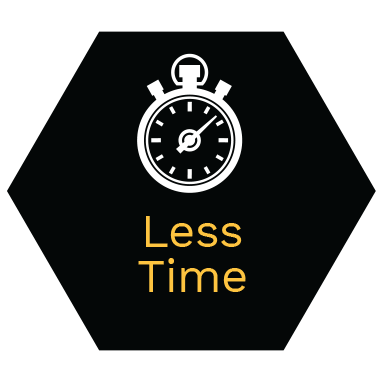



Extended Functionality
Zoneworks XT HIVE has all the functionality users are familiar with, including a clean and simple web-based interface that can be integrated seamlessly with other networked building management services.
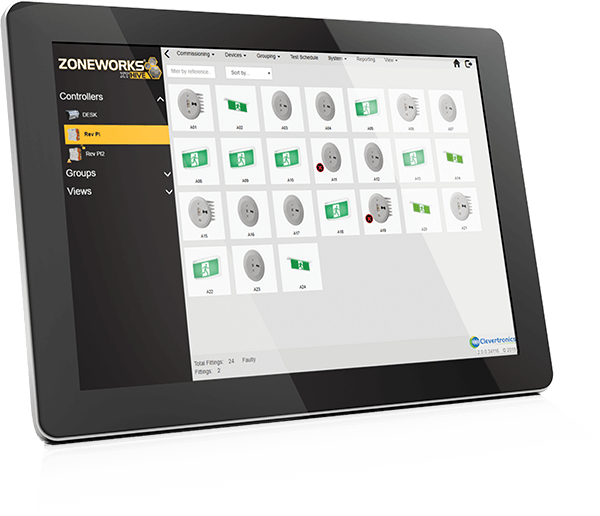
Fitting by Group
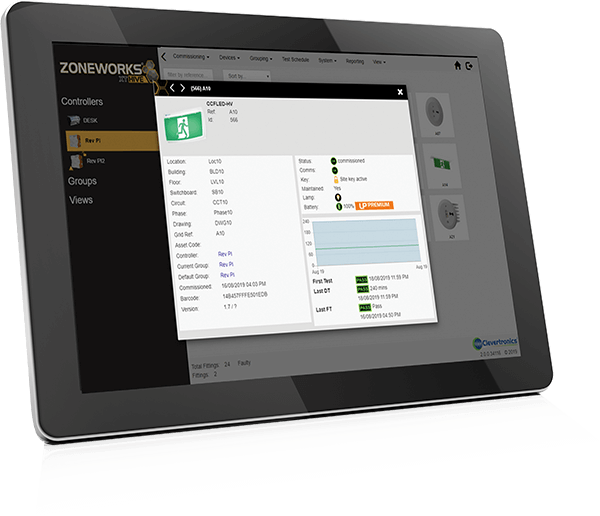
Fitting Details
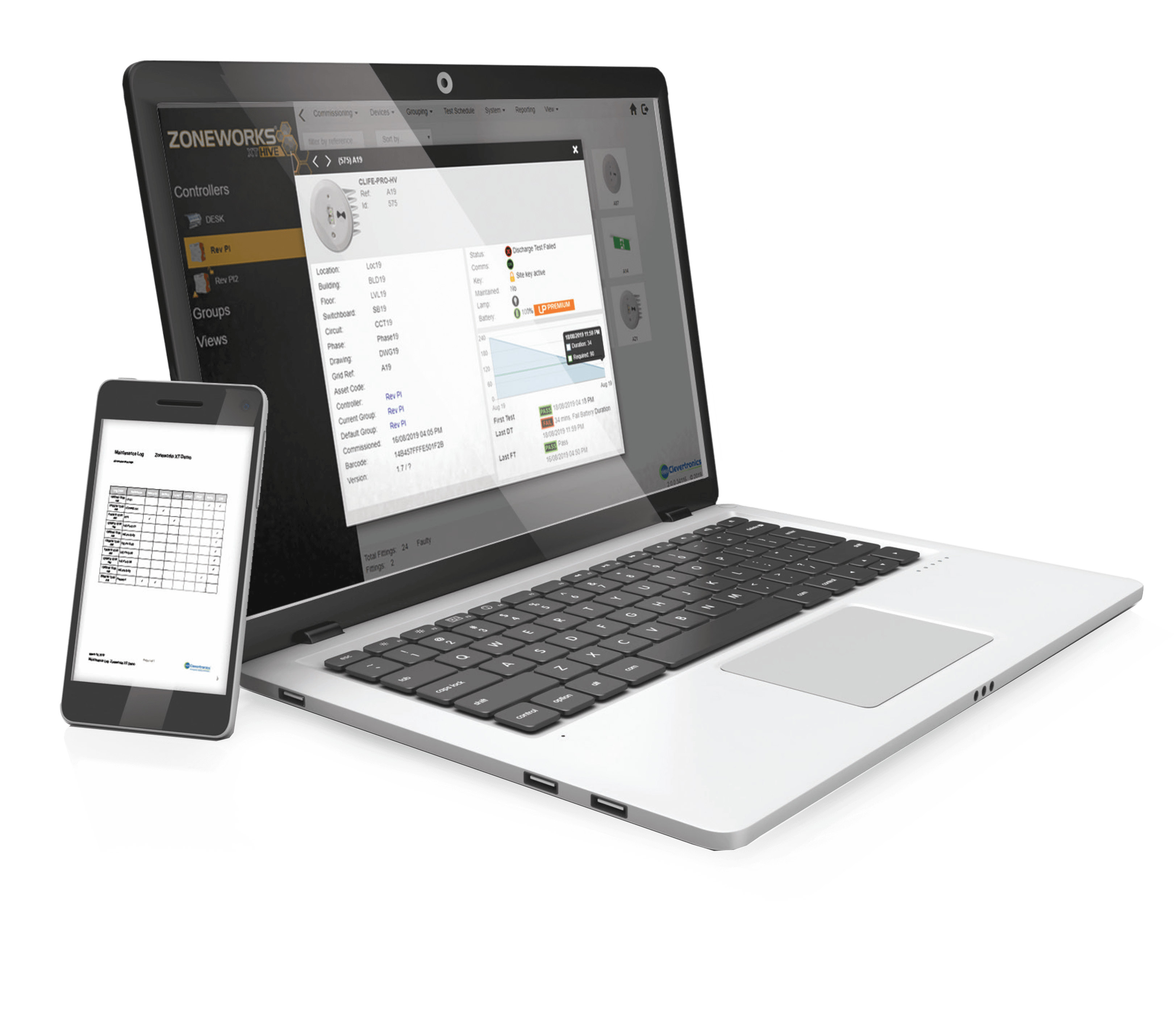
Reporting Functionality
The reporting functionality provides everything you need at the push of a button from faulty fittings, maintenance log and full test results.
Your Partner in Compliance
With the Zoneworks XT Hive platform, Clevertronics offers complimentary lifetime support through our Lifetime Technical Support (ALS) program. This service is designed to help the building owner & maintenance contractor manage the on-going health of the system.
Emergency lighting is regarded as a life saving device and therefore it is essential that it is always in working order. (The testing and product requirements are outlined in AS/NZS 2293), and compliance with the standard can be a costly exercise especially if the products and operating systems selected regularly fail. Many emergency lighting companies finish their involvement on your project once the product has been supplied. However, at Clevertronics we know that on-going support is important to contractors and building owners. Clevertronics offers lifetime support through our Lifetime Technical Support (LTS) program
Downloads
Simple. Fast. Powerful.
-
Are the HIVE fittings compatible with structured cabling installations?
Yes, as long as the fittings are powered up they communicate messages via RF without further reliance on the cabling infrastructure.
-
Can older/existing ZW sites be upgraded to ZW HIVE?
Yes, older sites can be upgraded and it would be recommended to do this as a gradual upgrade as the fittings require replacement. An upgrade will require the installation of an HIVE controller.
-
Will HIVE fittings have a visible antenna?
No is the general rule but metal fittings like our surface mount cylinder will have a visible external antenna.
-
What happens if I have 1,050 fittings on a site – is the 1,000 fittings per controller absolute?
Yes, this maximum number of fittings per controller is absolute. For 1,050 fittings you will need a second controller.
-
Is CleverEvac compatible with HIVE?
Yes, HIVE actually makes it simpler and easier to monitor CleverEvac fittings.
-
Does the HIVE system come with the advantage lifetime support program?
Absolutely, After-sales support with the ALS program continues as usual with HIVE sites.
-
How do I design an HIVE system?
An HIVE system is very simple and fast to design. Simply allow 1 HIVE controller to be installed to manage each 1000 emergency lights and exit signs. In a typical building scenario install the controller in the core area next to the facility managers office, provide it with an ethernet port for network access then add the emergency fittings onto the lighting circuits. No networking cables or additional aerials required! Contact your local Clevertronics office for free expert design assistance.
-
Are there any issues with interference between the HIVE RF signal and other RF frequencies in a building environment?
With HIVE DSM Meshing there is no single point of failure because all the devices are homogenous and can forward data as required. It is self-healing and reacts to changing physical or radio environments automatically. The HIVE Mesh is robust against interference. There can be several different wireless systems in the same area. Devices within the HIVEMesh locally choose the best channels to operate in whilst minimizing interference to other radio systems. In case a message is lost it will automatically be re-sent until it’s receipt is verified.
-
What is a MAD Device and how is it used?
A “MAD” or Mobile Access Device is a mobile commissioning and diagnostic tool that can be used to connect with individual or groups of fittings locally on a site. A MAD is a handheld unit the size of a mobile phone that can connect via Bluetooth to a mobile device (Phone or Tablet) and to fittings via an RF signal. Though not needed to commission a site it can be especially helpful for maintenance contractors and facility managers to perform function tests at individual fittings and check the live status of fittings locally after performing maintenance.
-
Can you connect a phone via Bluetooth to each fitting?
Yes, A Clevertronics MAD device can be used as an interface between a mobile device (Phone/Tablet) and individual fittings on a site. Please read the FAQ “What is a MAD device and how is it used. -
Is the MAD (mobile access device) locked to a site or can a maintenance contractor use across multiple sites?
The MAD can be used across multiple sites, however, users will need the local HIVE network key to access a specific network. In that way, we prevent unauthorised access to any given network.
-
How can you tell that the fittings are communicating via RF?
Check the status LED on each fitting
-2 amber flashes for uncommissioned but no controller found
-1 amber flash for uncommissioned and controller found -
How far can HIVE fittings communicate?
The minimum expected line-of-site coverage is 200m and the 2.4GHz signal can pass through concrete walls and structures (30m through 2 internal tilt slab walls). However, the HIVE fitting just needs to reach its closest neighbour on the same network security key to establish communications.
-
How do you secure the network to prevent HIVE fittings communicating with neighbouring buildings/systems?
When HIVE fittings are installed and powered up they automatically build their own network using a factory default network key. In the unlikely event that separate installations are installed side by side fittings may temporarily communicate with those in an adjacent site. This is remedied when the register is uploaded assigning a location reference to each fitting. Each site will then use/assign a custom network key to “lock down” the network and networks keys are unique to a building/site.
-
Can the service pin (test button) be used to send a message from a fitting back to the server?
Yes. You can also communicate directly to each fitting on the floor at the individual device using the Mobile Bridge device.
-
How can HIVE communicate to Emergency lights in RF restricted areas?
If a site contains an RF restricted area (eg Faraday cage) An HIVE-DATA (Hive-to-Wired) conversion module can be used to communicate via data cable to fittings within the restricted area. All fittings will still be visible as part of the HIVE Network. Fittings with remote gear are also used in this type of application and in this case the control gear could be placed outside the RF restricted area and therefore remain as an HIVE fitting.
-
What is the maximum distance achieved between a HIVE controller and a fitting?
Technically, approximately 200m in open air and 30m/2 walls inside a building, but this becomes irrelevant as the XT HIVE controller only needs to connect with the closest HIVE fittings and it won`t be 200m away. The HIVE platform uses DSM meshing to create our network – not point to point to the furthest fitting on site as some other systems attempt to do.
-
How many floors can the signal travel through?
HIVE uses DSM meshing rather than Gateway to each fitting (point to point) technology. This means Hive fittings only need to communicate with the next emergency fitting IE the floor above or below. This means the question on distance of travel (how many floors?) becomes irrelevant.
-
Does the HIVE signal interfere with Microwave sensors?
No, The HIVE RF frequency will not disrupt a microwave sensor signal
-



